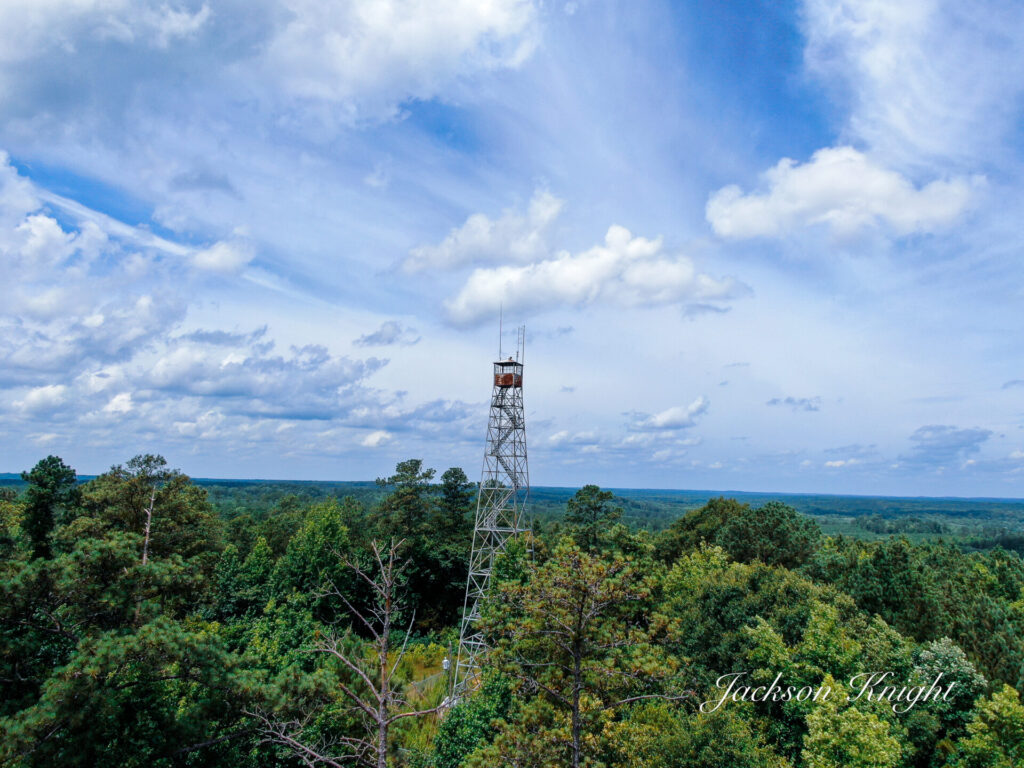
AL. Registry # 141
Located in North Western Perry County, AL.
Property is owned by the State of Alabama.
32.74104, -87.41977
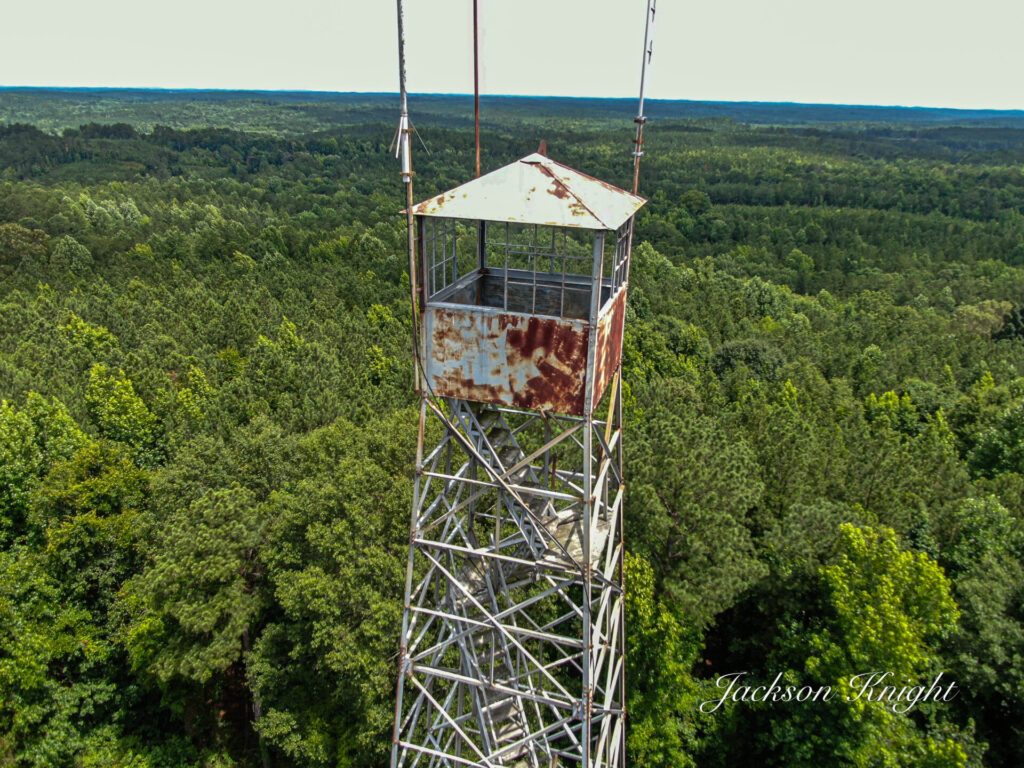

Rambling the Southland and beyond.

AL. Registry # 141
Located in North Western Perry County, AL.
Property is owned by the State of Alabama.
32.74104, -87.41977


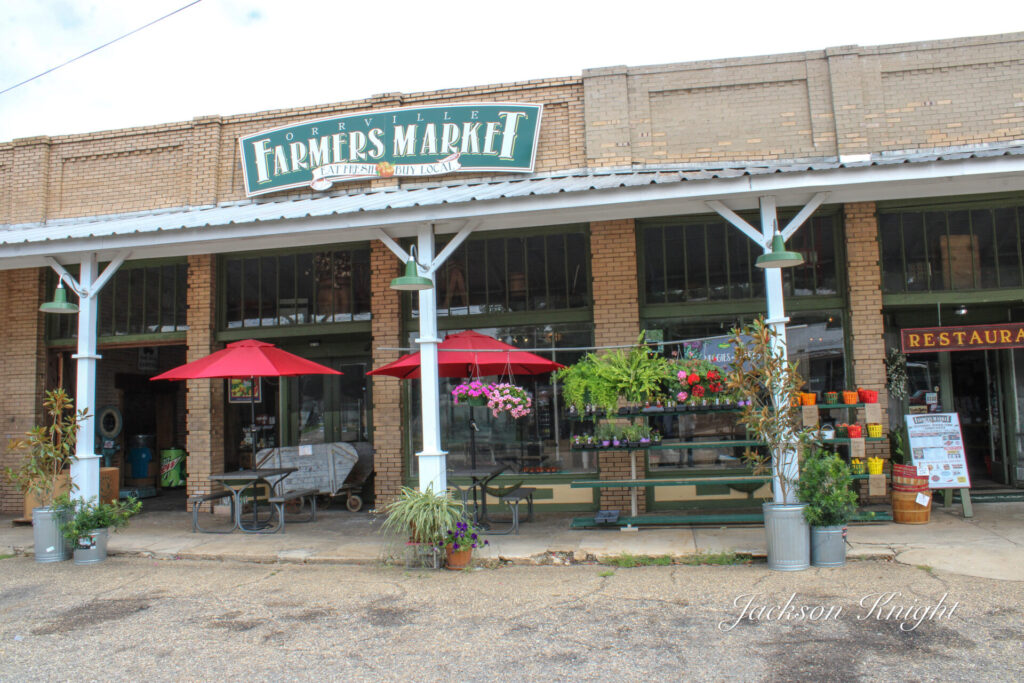
For those that follow us on our adventures we have been working hard in Perry County. As most know Perry County like most of our beautiful Black Belt Counties is very rural. While we were there we photographed over 100 churches and drove over 500 miles doing it.
We had issues locating a place to park our motorhome for a home base to work from.
We met some nice folks while we were working in Dallas County that were gracious enough to sponsor us. They allowed us to park on their property where hunters have their trailers parked. It was definitely a blessing. We were only a few miles south of the Perry County line and it worked out great. As they were telling us about everything going on around us one thing that was mentioned was checking out the Farmer’s Market at Orville.
The Farmers Market is one of those places that I have passed numerous times on the way through on my ramblings. I have always said, “the next time I come through here I want to stop there”. It seems like I have always been in a hurry or had something else I needed to do.
Wednesday night we were talking about our trip home. I remembered the Orville Farmer’s Market and I told my wife that I wanted to stop by there and check it out on the way back through.
I had been following it on social media and knew that it had to be a neat place. I also knew that it was one of the hundreds of places in our beloved Black Belt that had always drawn me like a magnet draws iron but like I said earlier for some reason I had never stopped.
We got up Wednesday morning, packed things up in the motorhome. We then pulled out and went by and thanked our sponsors who had graciously helped us out. Then we hooked the Jeep to the motorhome and pulled out.
We arrived at Orville a few minutes early for lunch. We decided that we would just wait around till lunch was served.
As we walked in the door, we were greeted by several young ladies that were at the counter. We strolled around looking at the well-stocked shelves of so many different things that I would not even start to try to name them.
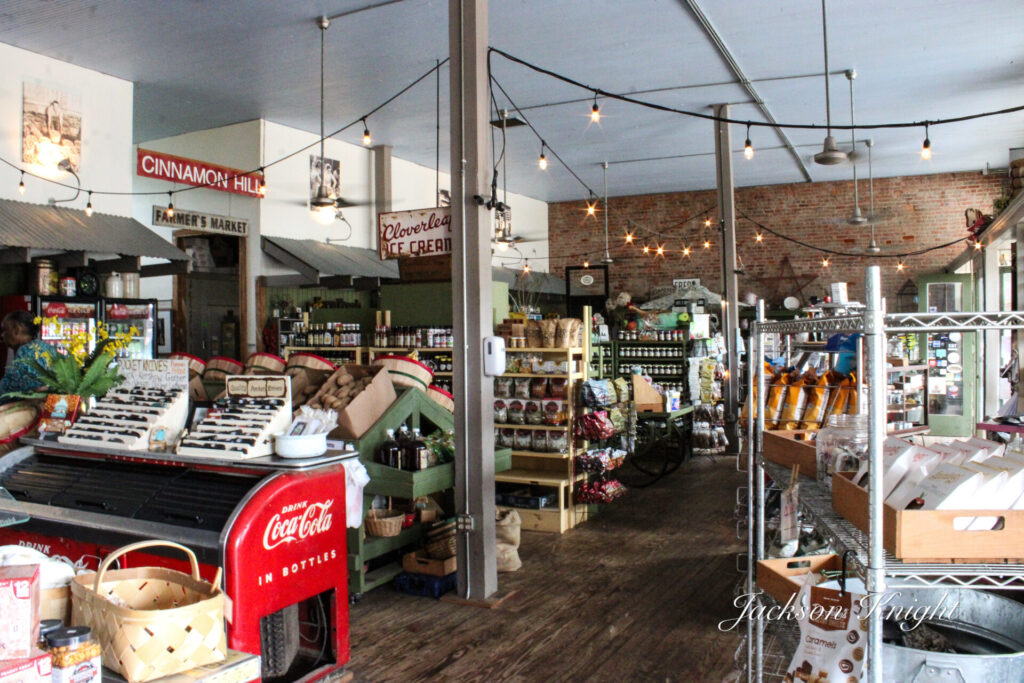
I loved just walking around looking. There was so much to see, inside and out. Everything was so neat and clean. Whether it is garden supplies from seed or tools on they have it. Dry goods, canned goods, different apparel, gifts, there is something in there that will appeal to everybody.
There were many, many different things on the shelves. There were numerous different types of things like cheese of numerous varieties in the coolers. There were beautiful vegetables neatly arranged. We saw some jalapeno peppers that were huge. There were also some of the largest bell peppers I have ever seen. They would have made some incredible stuffed peppers.
As we were finishing up our tour of the General Store, the workers were finishing up stocking the food on the buffet for lunch.
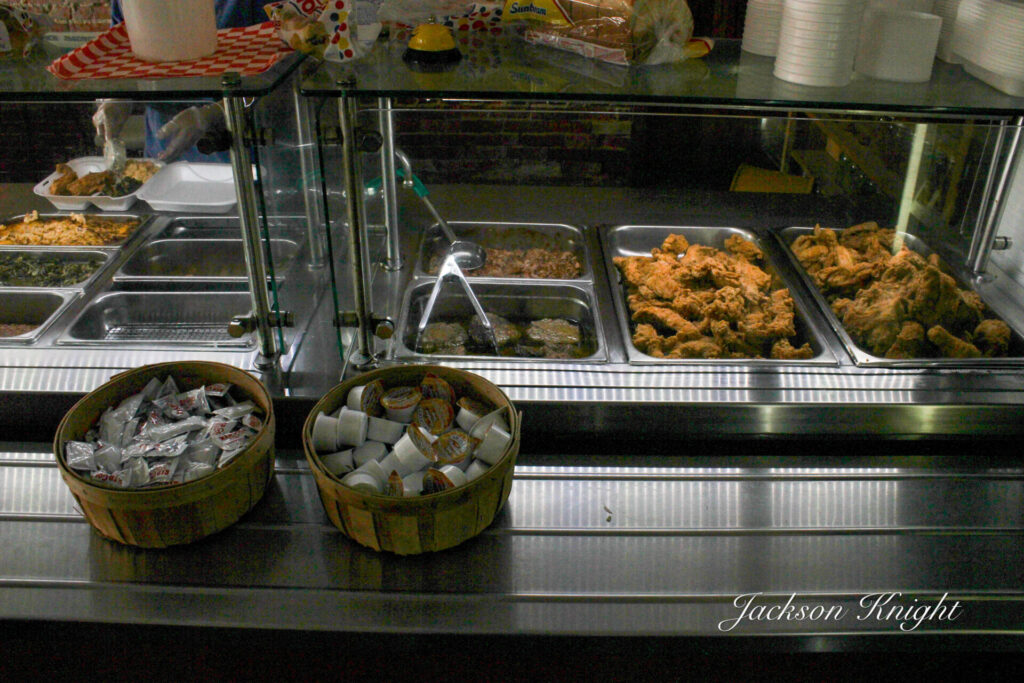
Then came decision time. I love lunch buffets, but I hate lunch buffets. I love them if they are good ones because I love good southern food. I hate them because it is too hard for me to decide what I want to eat. This one did not disappoint. It looked awesome from the get-go. I settled on chicken strips, okra, macaroni and cheese, and jalapeno cornbread, and sweet tea. Beverly had chicken strips, macaroni and cheese, collards, and jalapeno cornbread.
We got our food and settled at a table in the dining room. The food was awesome. I had NO complaints. The food was excellent. We had to take some of our food home because it was more than we could eat.
I have seen the shirts with the saying on them, American by birth, and Southern by the grace of God. In my humble opinion there are no truer words. We are a blessed people to have the opportunity to experience the wonders of our beloved Southland. In the heart of that is this special place called the Black Belt.
Our Black Belt houses many treasures. I would have to say that the Orville Farmer’s Market is one of those treasures that if you have not visited, you definitely need to. It is definitely worth the drive if you are anywhere close to the area. If you are traveling mark the spot and check it out. You won’t regret it. We will be back as we continue to ramble.

My wife and I have been married over 40 years. Rarely do you see one of us that you do not see us both. Neither of us can stand to just stay at the house. Not because being at home is bad. In fact, we sit at home a lot as well as ramble. Buuutttttt. If rambling is an option, then that is the option we are going to take.
Life is an adventure. I have found that there is always something new to experience. Somebody new to meet is always right around the corner. A new place to go, or a new place to eat is always there.
Last Summer I actually did do some traveling by myself. I went out 5 trips throughout Southeast Alabama. I ran several thousand miles visiting rural map dot towns. You know, the ones that are not on the interstate. The ones that sadly are now in a terrible situation. Those places that so many people relate to. Many times, they are remembered now as places we went to when our grandparents were still alive. For many more they are where we were raised. They represent a different place and a different time. For most of us it is good memories. For so many of us it is a place and time we miss so badly and would love to be back in.
On one of my trips last year, I took a photo of a neat looking place over in the vicinity of Grady, Alabama. I honestly think I took it more for the fact that there was a neat sign with a water tower in the background. When I am out taking photos of that type I normally always capture a few shots of water towers.
I think the place was closed that particular day, or possibly it was the hour of the day that I was there. After I got home and shared photos and communicated with folks and so forth, I came across this business on Facebook.
The name of the business was Red’s Little School House. It is a restaurant. I have followed them on social media ever since. I have commented on their page more than once that when I was back working in that area that I was going to have lunch there.
A couple of weeks ago my wife and I were talking about some future excursions. The subject of Red’s Little School House came up. I commented that we had been in Lowndes County recently working and should have broken off one day and went up and given it a try. Unfortunately, we had been preoccupied and did not think about it. My wife said, “why don’t we just ride up there and give it a try?” With that said she got online and found out when it was open, and we made plans.
Now we have been to some incredible places, and we have been to some places that we are not going to go back to. We set out early to mid-morning of Wednesday June 6. We located it on the map and followed GPS. When we got there, I looked, and we had driven exactly 100 miles. That is a pretty good ride to eat lunch at a place you have never been to nor talked personally to that has eaten there before. I had told my wife on the way up more than one time, “I hope we are not disappointed.” Her response every time was, “we have been disappointed before, and I bet we have had worse.”
When we drove up there were cars in the parking lot, but we were kind of early, so it was not crowded. We walked in and were immediately greeted by a friendly young lady who told us to sit wherever we chose. When we got settled at a table she came and took our drink order. She then said help yourself to the buffet.
We headed out! Fried Chicken, chicken livers, pulled pork, camp stew, hamburger steak in gravy, vegetables, fried cornbread, and rolls. OH MY. I loaded my plate. I wanted to try as many different things as possible, but realized real quick that there was no way I could try it all.
We went to the table and all I can say was wow! There was a sign I read in there that said, “If you find food any better your grandmother cooked it”, or something very similar. That my friends, was an understatement! I have eaten folk’s grandmothers cooking that was not as good as that was. Actually I have had a lot of home cooking that was not as good as that.
The only thing I regret about that trip is that instead of just going through the line and helping my plate, I wish I had gone through and checked it out before. I LOVE fried chicken, and I love chicken livers. That fried chicken was excellent. The livers were as well. HOWEVER, WHEN and I said when not IF I go back if it is on a Wednesday and they have the hamburger steak I definitely will load up on that and if they have the camp-stew, I will load up on that. There was not one thing we tried that was not wonderful in our opinion.
So to recap this, we drove a hundred miles to a local restaurant that serves a lunch buffet for lunch. If you have never been there, we highly recommend you give it a try. We definitely will go back and eat there if we are anywhere close to the area. In fact, we are subject any time to get up one morning and make the drive back and give it another whirl.
My hat’s off to Red’s Little School House. Your food in my opinion is better than you portray it to be. I highly recommend you to anybody hunting great home cooked Southern Food.
On an almost daily basis I see people who are hunting something different. What I mean is they are fed up with the hustle and bustle of modern life. They are fed up with everything associated with the industries today that are governed by money rather than efficiency. Many are learning to be self-sufficient.
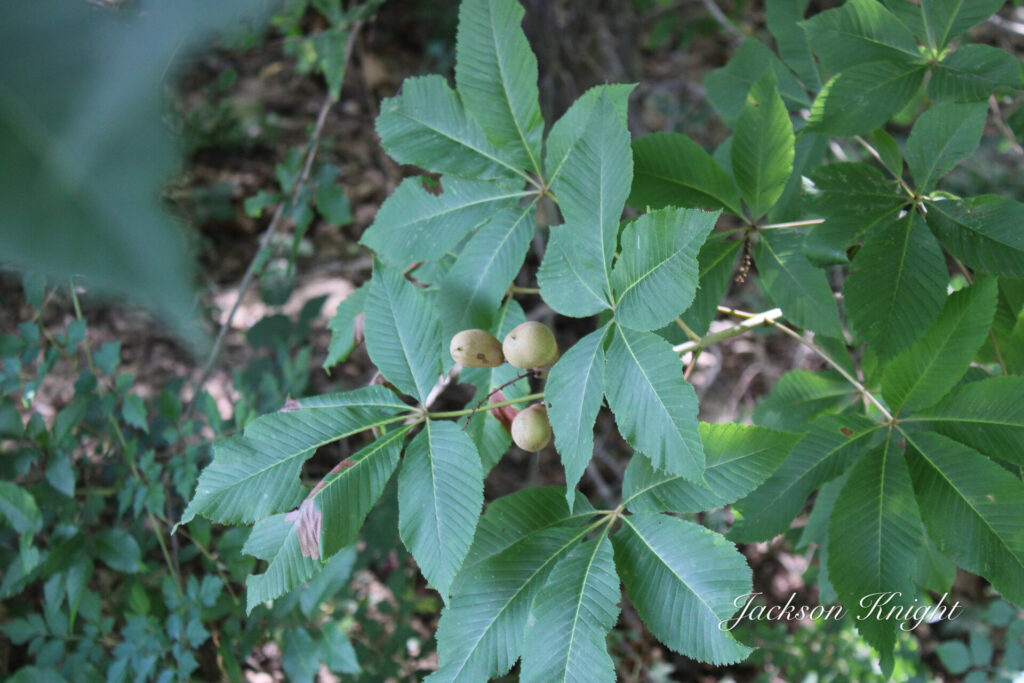
I see many that are growing their own food and learning the old ways of doing things that worked for centuries. I like so many I encounter are interested in many of these old and mostly lost ideas. One of the things that I personally am interested in is natural medications. I am at this writing 67 years old and I do not take any medication of any kind nor does my wife. We are thankful for this and hope it remains that way as long as we live. We also hope to live long productive lives.
I have on more than one occasion seen books offered that taught about utilizing wild plants to eat and medicate. For me anyway it would get overwhelming. First off it utilized plants from all over the world or at least not my local area.
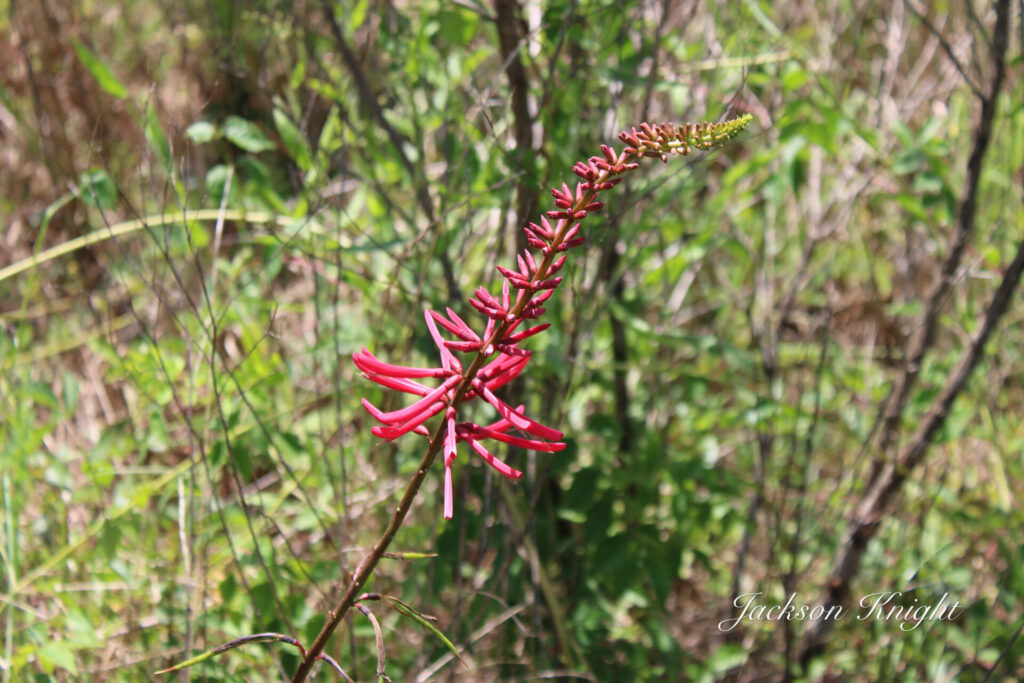
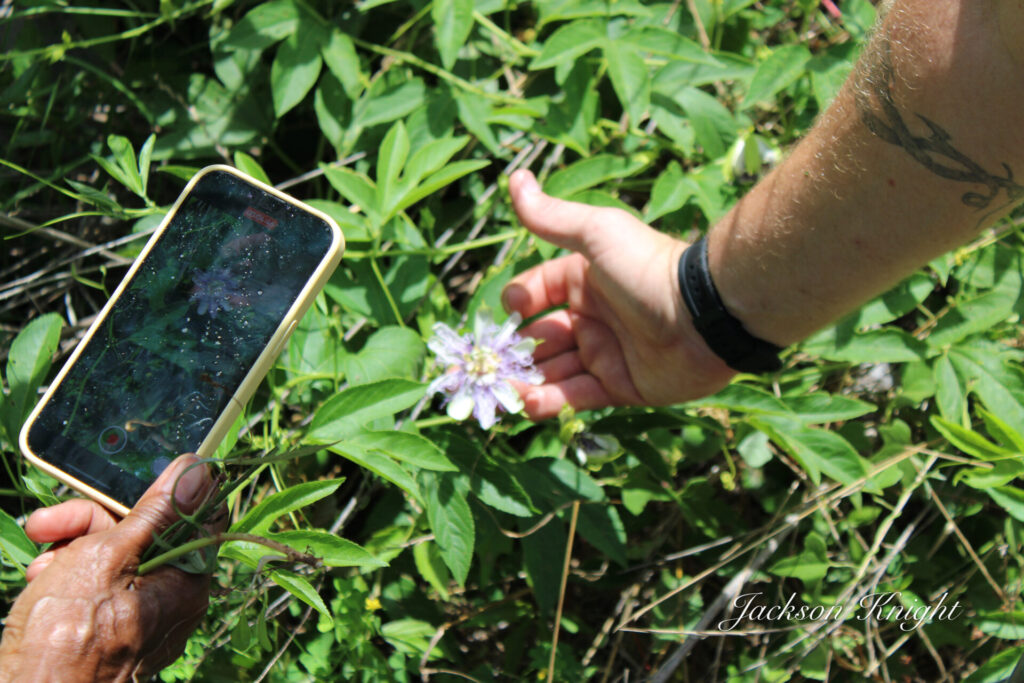
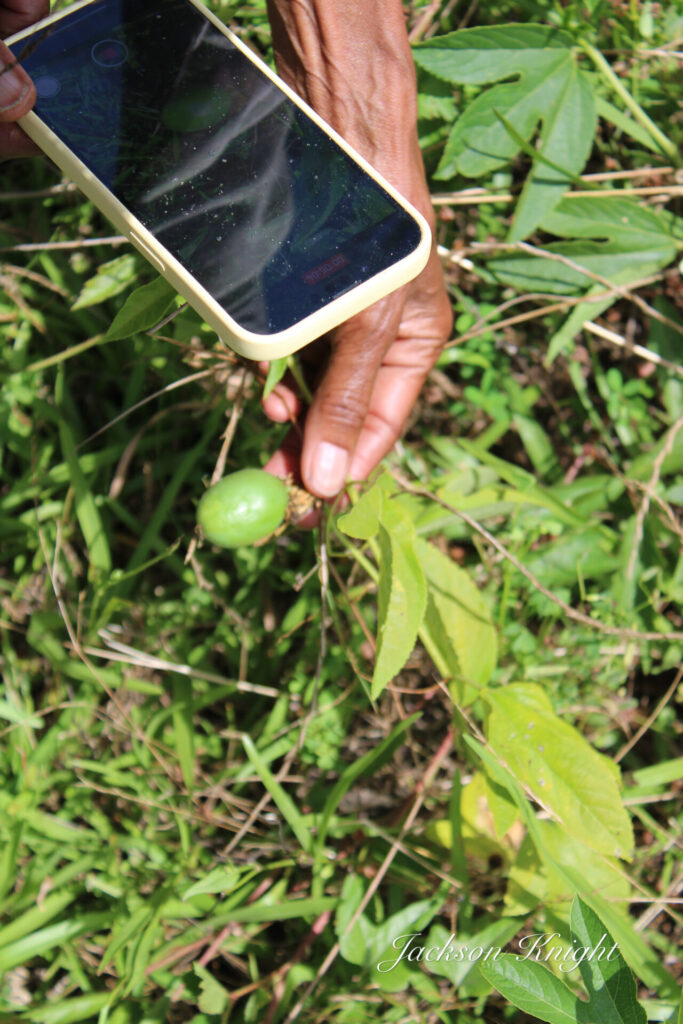
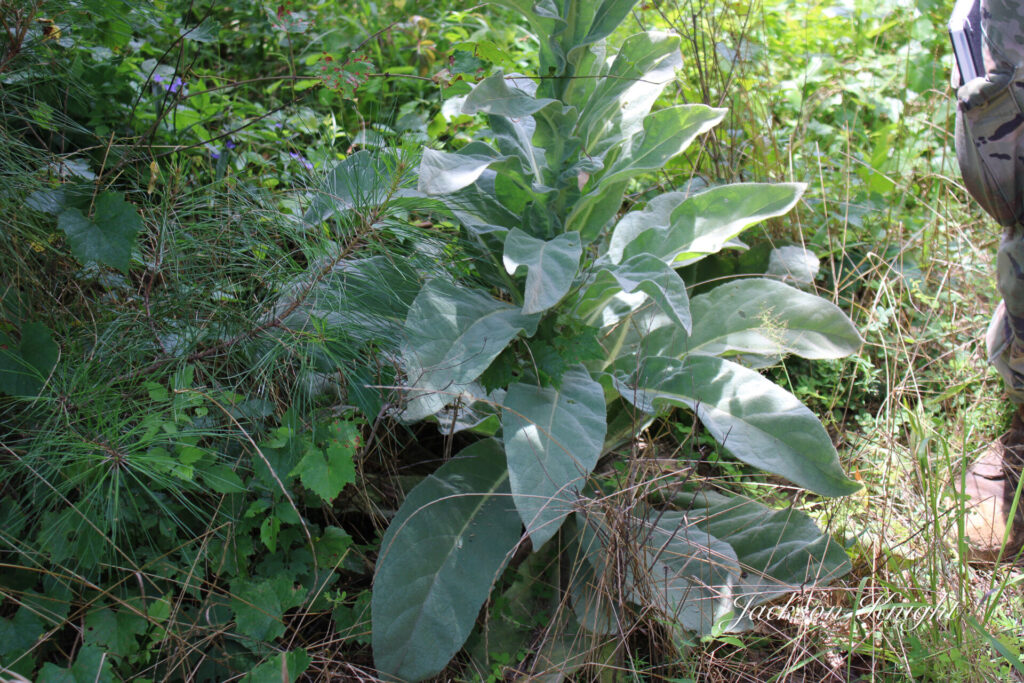
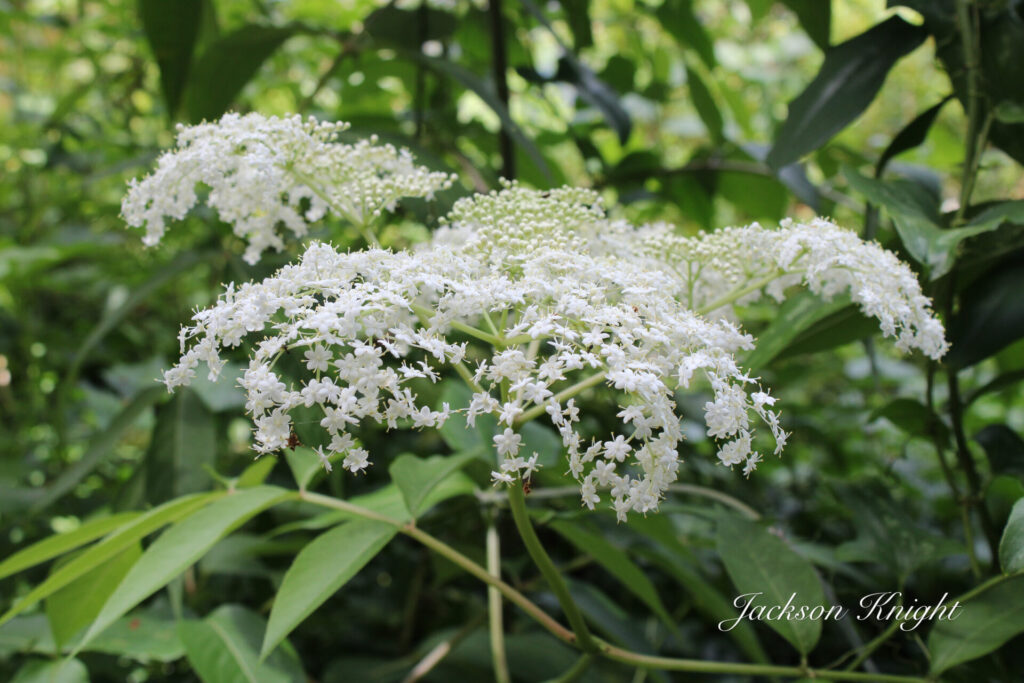
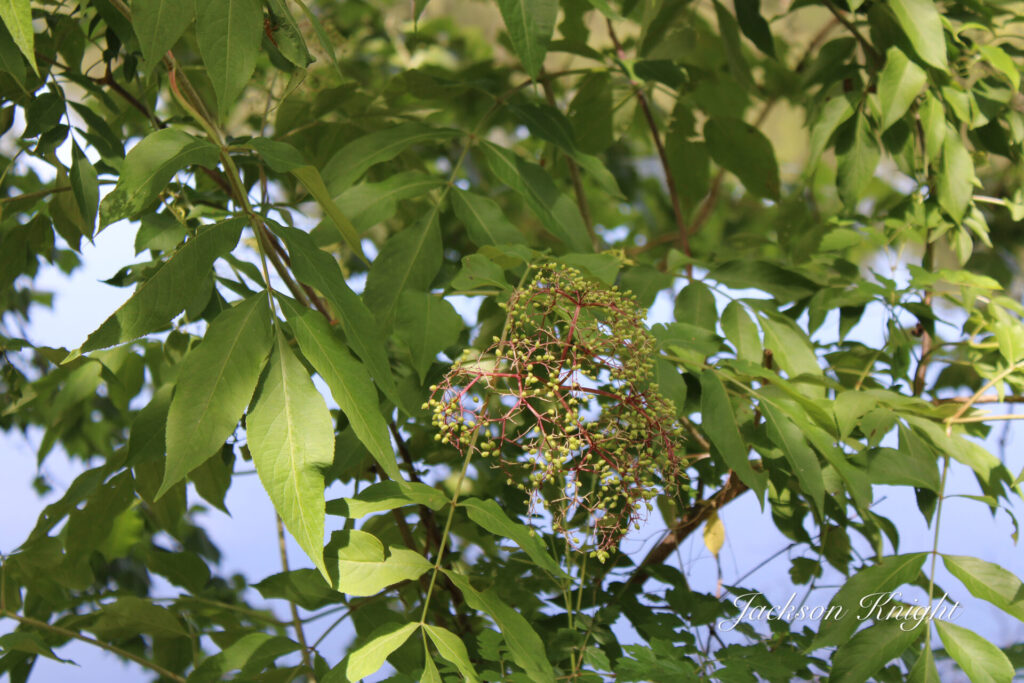
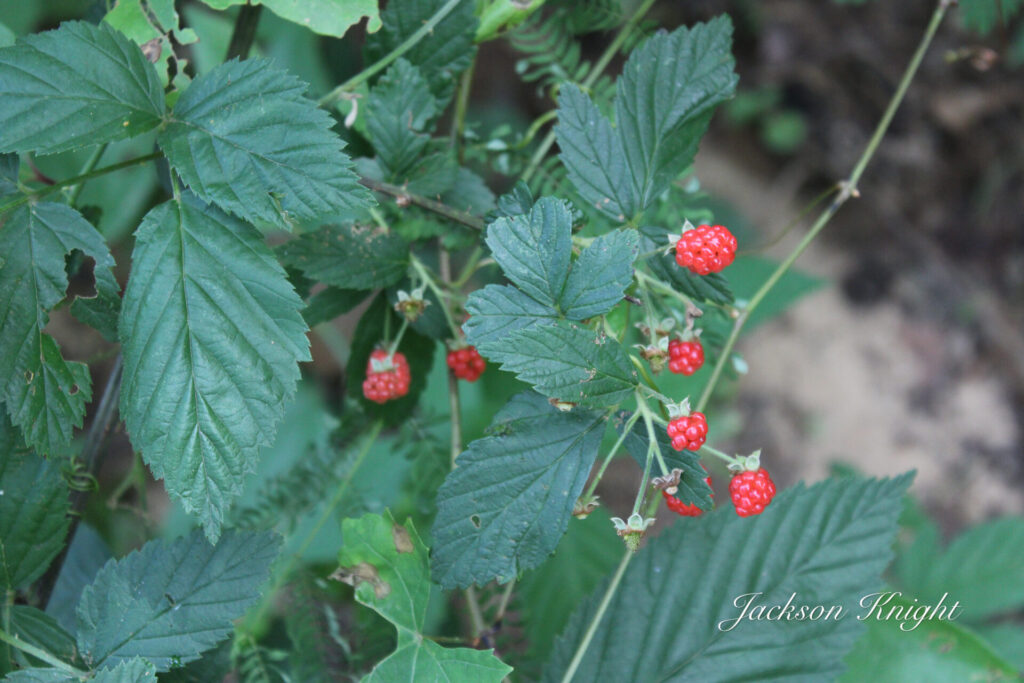

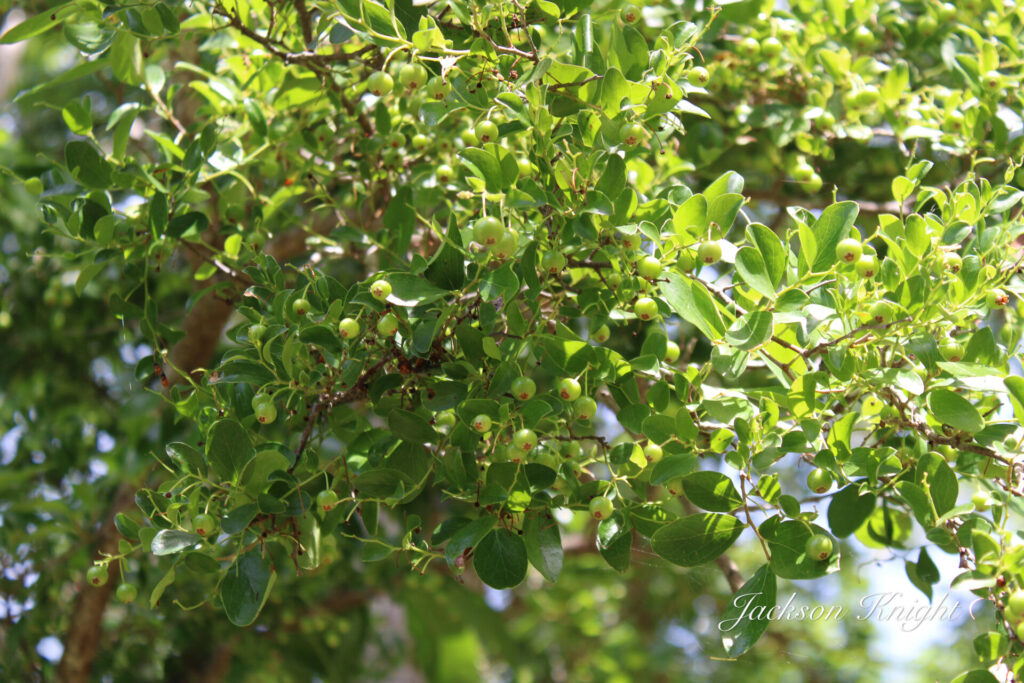
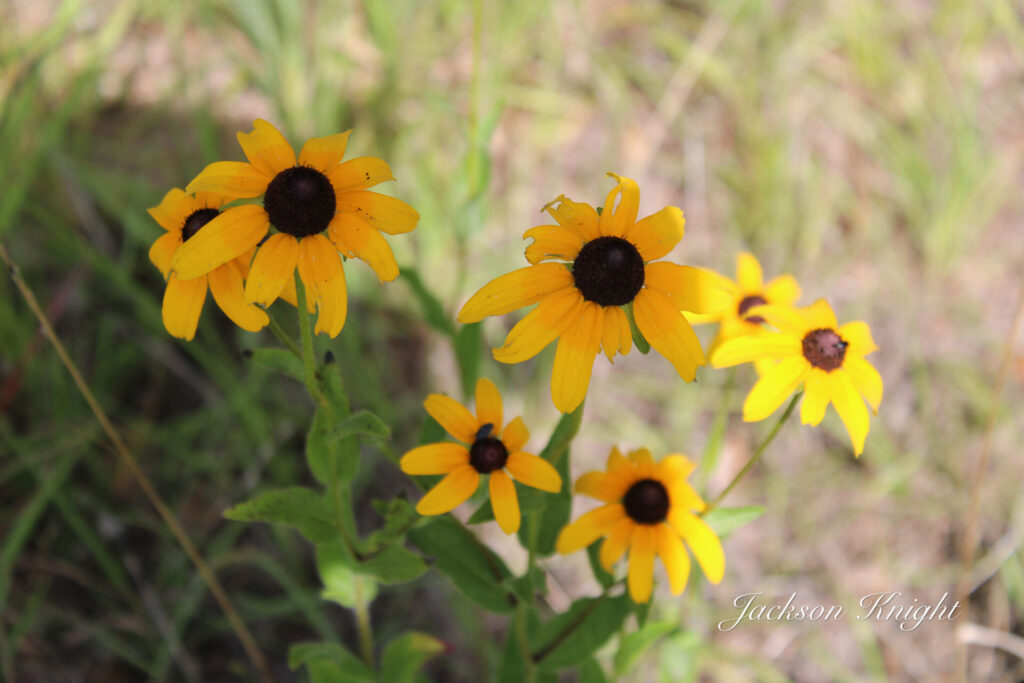
Recently I have started noticing people on social media talking about plant walks. My curiosity was spurred. Exactly what is a plant walk, and what happens at one? Those were two questions I wanted to find out the answer to.
A few weeks ago my friend Demp Bell messaged me and asked me to come to one. He owns Cornwallis 1828 which is a very interesting and unique place in the Alabama Black Belt. I serve as one of the Pro Staff Photographers for Cornwallis 1828.
I was eager to get this on my calendar. It was a Saturday morning event. I made the drive up and was waiting when others started to arrive. I was introduced to a young man named Kyle Fuqua. He was the guy who was leading the plant walk. It did not take two minutes to realize he was a walking encyclopedia on plants. I was both shocked and amazed at his knowledge.
Within a few minutes others started to arrive. Demp had coffee, muffins, juice, milk and other things on hand for those attending. As always everything I have ever participated in at Cornwallis 1828 was done with perfection.
As we started one of the first things I learned was that in the short distance we were going to walk Kyle had scouted the evening before. He said he had identified over 80 plants within a short distance of the trails he had covered. I would estimate the distance to be ½ mile approximately.
Once we got started it was incredible to follow along and learn. Over the course of the next three hours, we learned that you can make cookies or bread from persimmons that grow wild. We learned that you could utilize the leaves and balls from a Sweetgum Tree to create the equivalent of Tamiflu to treat cold or flu.
We learned that Ragweed is very nutritious and that although most people think they are allergic to Golden Rod but, it is Ragweed that causes the allergy. Ragweed is at the right stage at the same time as the Goldenrod blooms. That is why folks blame the Goldenrod for their allergies.
We learned that you could put white clover in soups and stews. The numbers of other plants that we learned you can eat is just unreal. I have spent countless hours in the woods in my lifetime and I had no clue that many were nutritious and edible.
We found out that what we commonly call Begger lice can be utilized as an antibiotic. Curley dock roots can be used as an anti-parasitic.
Kudzu, of all things, astounded me. You can eat the leaves; you can take the roots and make flour. Kudzu flowers are edible and can be used to make jelly.
It just goes on and on and on as to what works for what. Another thing we learned was that many times moss will have chiggers in it so stay away from it.
Beauty Berry can be used as a natural mosquito repellant, as well as other things. Saw briar leaves can be used to make a tea that is good for the common cold. Dog Fennel can be used on the skin for bug bites but will shut your liver down if you ingest it.
It is intriguing, literally that there are so many things right there around you that you walk and drive past daily that can serve so many purposes in everyday life. Many can be eaten. Many can be used as medications. Many are poisonous. Many that are poisonous can be used if they are prepared correctly.
Discussion was made before we all left as to the possibility of doing future plant walks. I highly recommend to anyone that is remotely interested to find Cornwallis 1828 on social media and watch for upcoming events of that type. I truly believe that pretty much anyone would benefit from the knowledge that is passed on through these events.
Cornwallis 1828 is a special place in the Black Belt Region of Alabama. It is a place of learning and history. Children can roam free and be safe. I know I plan to be at the next plant walk that is held and I cordially invite you too as well.
I have been told all my life that seldom does one have more than one perfect dog in his life. I can’t honestly say that is true because in my lifetime I have owned several. All of which were a different breed and served a different purpose at a different stage of my life.

When the boys were growing up, I had a couple of decent bird dogs but none that I would say were outstanding by any sense of the word.
We started rabbit hunting with beagles and over the years we ran them I culled many to get some really good ones. I had a 15” Tri-color that I would have dropped the tail gate on with any that I ever saw run. His name was Barney and he would tote the mail for you.
He was a big-mouthed dog that I could literally pick out of a hundred running in a big pack competition. I have seen him run briar patches until he would be bloody like he had been in a fight. I have seen him run till he would be so sore that he could hardly climb out of the doghouse the next morning. He did not know the meaning of the word quit. I ran him with a female we called Lucy, and she could hold her own as well with about anything that you dropped out with her.
Over the years I had a couple of working herd dogs that were fair as well.
We had gone years without a dog while we were involved in ministry. I did not have any livestock and did not hunt.
I decided in 2013 that I wanted a dog as a companion animal. I got a puppy that was brindle colored and called him Peete. He was very intelligent, but he just did not fit with our lifestyle. I learned quickly that I needed a dog had a lot of criteria that had to be met or I could not make it work for us or the dog.
I found a home for Peete, and we decided that we would try to adopt one from the animal shelter. We went to the shelter the last week in May of 2013. We found a small female dog that for some reason we were attracted to. Honest to goodness it was almost like trying to adopt a child from a foreign country. I came within an inch of walking away and telling the lady at the shelter to forget it. We had to fill out an application and the lady grilled us on numerous questions. The lady told us to come back the following Monday and if we were accepted that we could pick up our dog. Again, I almost did not go back. It was ridiculous.
We went back though the first Monday in June of 2013. We picked our little dog up and carried her to a groomer and had her bathed and trimmed and she looked like a different little dog. The girls in the shelter had named her Taffy and we chose not to change her name.
The lady who groomed her asked us was she about to have puppies. We had been told at the shelter that she was not with puppies. We took her to the vet to have her health checked. The vet said that she was not with puppies that he could tell. A few days later we left her with our granddaughter for a day while we were out of town and while we were gone, she delivered two puppies.
We took care of her and the puppies till the puppies were old enough to wean and we gave them away to a friend. We had Taffy spayed and life was good.
Taffy was exactly what I had been hunting. If you heard her bark or alert, you had better get up and check. Somebody or something was there. She was NOT a yapper. House broke to the utmost. Playful enough to be fun but not overboard. Never met a stranger.
She was attached to all of our family members that visited. Most Friday evenings family would come to our house, and we all ate together. One of our brother in laws named Bob always played with Taffy. When Friday came Taffy would gather her toys and be playing with them by 3 in the afternoon. We could ask her “Taffy, is Uncle Bob out there?” Immediately she would run to the door and look. If she was in the sun-room she would rear up to look out the window.
There were numerous other things we could ask her and get a response. She would immediately hunt me or Beverly if the other one asked her where we were.
We were never sure exactly what Taffy was. She was a beautiful blonde color. She did not shed at all. NO hair in the house period. We thought from her appearance that she was a cross between a Dachshund and a Yorkie. My wife took her photo one time with the Google Lens on her phone and it said she was a cross with a Dachshund and a Poodle. We never went to the time nor expense to have her DNA tested to see what she was.
Taffy weighted 15 pounds and pretty much always held within a pound or so of that.
I have seen many little dogs in my life, but I honestly can say I have never dealt with a dog that had more intelligence than Taffy. You could literally talk to Taffy like she was a kid and she would mind.
If I was sitting in my recliner, she was going to be laying between me and the left arm of the recliner. If my wife was sitting on the couch, she would sit with her a while and then come sit with me. She had rather ride in the jeep than eat when she was hungry. She could jump up in my Jeep which was sitting in 35” mud-grips with NO trouble if she knew she was going to get to ride.

In 2022 we noticed Taffy was losing weight. We had her checked and the vet did not find anything wrong with her. We spent 8 days with family out of state over Christmas of 2022 and boarded Taffy. That was the longest she had been away from us in all of those years. When we got back we noticed changes in her. Normally over all the years we could just leave food out for her. She would just graze through and pick up a few morsels of dry food and bring it in the living room and eat it a few times a day. After that time, she would eat everything we put out immediately. Soon she started having anxiety attacks. If we left, her alone for any length of time she would have anxiety issues. Sometimes she would have them even sitting at home with us at night.
Honestly looking back, she had been going downhill long before that. Us being away from her for that long we saw it magnified. Kind of like when I worked shutdowns and did not see my kids for long periods of time and then saw them and realized they had grown.
In December of 2023 we noticed she was fading fast. Her belly was getting enlarged and she had no energy. She would not play with her toys and just was not herself. Our vet examined her and did an x-ray. That is when we realized that her liver and some other organs were severly enlarged. She also had a bladder infection that would not go away. We had to keep her on antibiotics constantly and as soon as we stopped them it was back with a vengeance. We knew then that it was a matter of time.
Over the next weeks we saw her fade fast. She got to the point that it was a labor for her to just get up the two steps into the house. She would have to go out numerous times a day which she had never had to do. One afternoon when she went outside she fell over and it was hard for her to just get up.
Our forty first anniversary was Feb 4. That day we realized we were going to be faced with what we had been dreading for a long time. She had gotten to the point that she was drinking unreal amounts of water. It was obvious she was suffering, and she could not control her bladder which was not normal.
The next day Feb. 5, we were eating lunch and both of us knew it was time. We called the vet and made an appointment. We then took her and wrapped her up and took her out and rode on the golf cart. That was one of the joys of her little life. She just laid in Beverly’s lap and looked. We knew we were making the right decision as hard as it was to do it. We took her in. They took us into the back and the vets assistant told me that she needed to hold her to assist the vet.
We stood there with her rubbing her till she was gone. In my opinion we were the most important thing in her life and we stayed with her till she was gone. Then we brought her home and buried her.
Our constant companion was gone.
Forever it seemed everywhere we went was a reminder of Taffy. There was a water bowl in the car, and in the Jeep, and in the pickup. There were toys here there and yonder. Her food, and water bowls in the house and in the camper. There were the little smudges on the car and Jeep windows where she had put her nose looking out the windows. The same little smudges on the windows at the house where she had always ran to check things out if she heard something outside to investigate.
Even now months later we still come across stuff that as associated with Taffy.
We have no intentions of getting another dog. We discussed it but first off, there will never be another one as perfect for us as she was. Plus, because we are always on the go it would be hard to take on the responsibility.
I honestly don’t believe that once you have had that perfect one there is nothing better. Little Taffy was one of a kind. If there was ever a perfect little companion doggie. Taffy was it.
I have been through Pine Apple many times over my lifetime. I have heard numerous times that there was a statue there in the graveyard. I never gave it much thought. It was just one more rabbit trail that I had filed in the back of my mid that I needed to run but never got around to it.
I have so many of those rabbit trails that it would be impossible if I had three more life times left to run them all. I still like to run them though from time to time.
This week my wife and I were out checking out churches in Wilcox County that I had not gotten to for my upcoming book.
I started on a photo book of Wilcox County Churches back in October. I had a lot going on and to be able to work on that many churches requires a lot of travel. Instead of completing Wilcox County, I just settled in and went to work on Monroe County. I had numerous personal things going on, and there was no way I could leave home for two or three days at the time. I could however take numerous trips of a couple of hours at the time. I had to burn the midnight oil to get it done, but I was able to release my Monroe County Book the first week in January.
Then my Jeep decided it was time to give me fits and I lost almost three weeks trying to get it fixed. I got it fixed and then we had weather issues. I don’t function well when the temperature is in the teens.
Finally, it looked like it was going to break for a day or so. We left home on Monday morning and headed north. I had worked for hours upon hours scouring maps and other sources online hunting the churches in Wilcox County.
We made it into Pine Apple and I was taking photos of the Friendship Baptist Church. I looked across the road and saw the large cemetery over there. I saw the marker on the fence identifying it as a Black Belt Heritage Area.
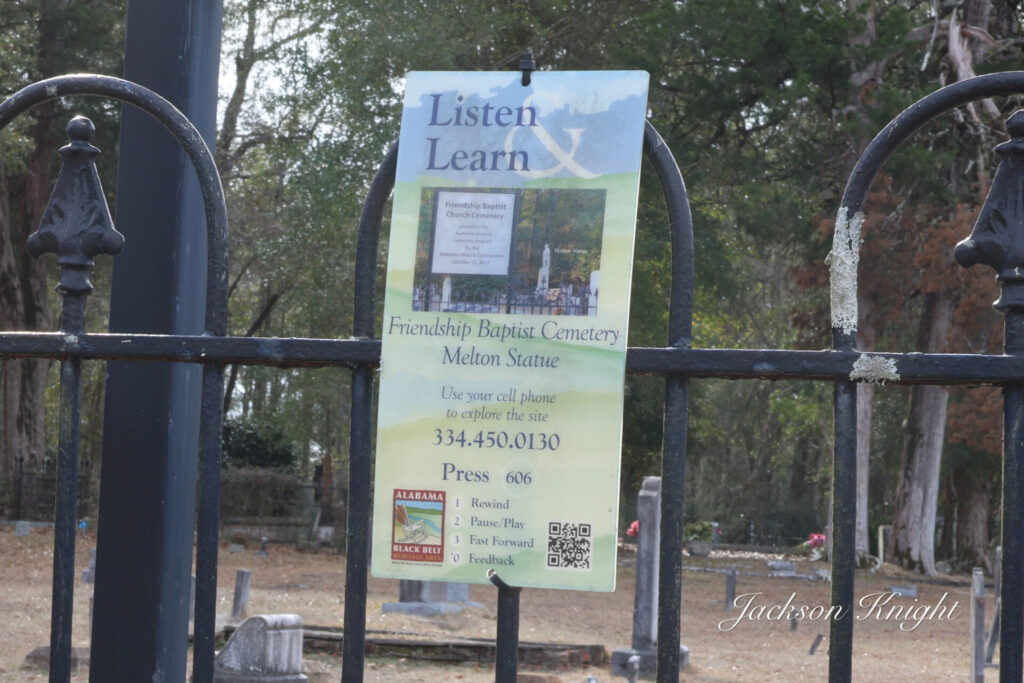
Beings that I am totally committed to the things of the Black Belt, and I thrive on learning history I immediately had to take a photograph of the placard with the phone number of the recording on it for a future reference and I had to see the statue listed on there. I walked across the cemetery to the statue and viewed it. Then I captured some photos of it and read the tombstones around it.
Since I had a lot of miles to run to get all of the church photos that I could for the day, I didn’t give the statue much thought for the rest of the day.
The next day I started to ponder on that statue. Who was this man? Where did the statue come from? So many questions. So few answers.
At first, I sat down and googled “Statue at Pine Apple Alabama. Immediately there were a couple of things that came up. I stared to read about this statue. I had seen the name on it was William Joseph Melton. He was born Sept. 29, 1846, and died in July 4,1900. That much I knew but what else was there to know?
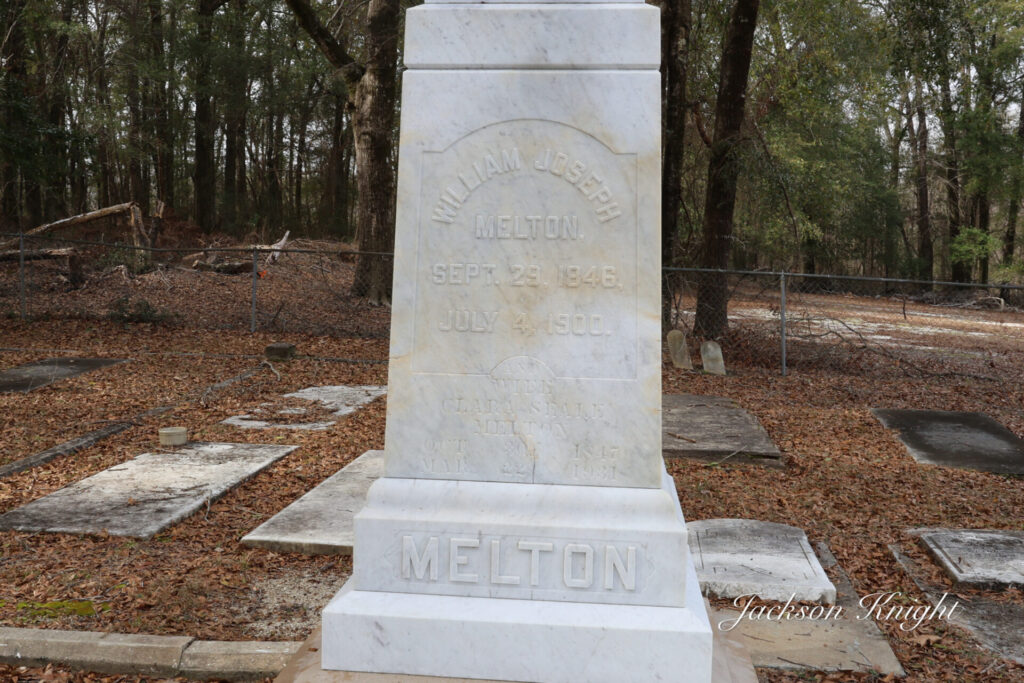
It turned out that Mr. Melton was a very influential man in Wilcox County. He was also a very successful planter. All of the sources I saw said that when he died his daughter took a photo of him with her to Italy and commissioned an artist there to carve a statue of him out of marble.
All of the sources said that the statue was transported by ship and then transported up the river to Claiborne where it was off loaded onto a wagon and hauled the rest of the way to Pine Apple.
Then when the statue was being erected in the cemetery is where things got complicated. Supposedly the members of the church had some issues with it being there because it violated the Ten Commandments because it was a “Graven Image”. Finally, a compromise appears to have been reached. The statue was allowed but it had to be laid down instead of standing up. Then at some later date permission was given for it to be erected. Now I don’t know if it was given or just somebody took it upon themselves to erect it. Regardless of that fact it stands 122 or so years later facing East and proudly overlooking the cemetery.
The recording states that Mr. Melton was a Civil War Veteran that was captured as a prisoner of war. Supposedly he died suddenly in Montgomery. His body was transported back to Pine Apple where he was buried.
So here we are all of these years later and I found it. Now that is one off of my bucket list. I ran a long day looking for churches and found some. I can only imagine what interesting thing I will find the next time I go out. That was definitely an interesting find.
I was born in 1957. Growing up in Monroe County Alabama was indeed incredible. When I was born my parents lived with my grandparents. When I was three years old, my mother went to work at the Vanity Fair Mill in Monroeville. I stayed with my great aunt while my mother worked. I also was blessed to spend a lot of time with my grandparents. Because of that fact I was blessed to hear hundreds if not thousands of stories. What would I give now to be able to go back and rehear those stories again.
My great aunt was born in 1896. My grandfather was born in 1906. My grandmother was born in 1908. My grandfather and great aunt were born and raised up at Sedan which was a community located a short distance above Vredenburgh, in Southern Wilcox County.
My grandmother was born in Clarke County, in the area called Cane Creek, which was in the vicinity of Chance, Syrene, and Lower Peach Tree. I am not sure what went on with her family, but her mother and the children moved to Monroe County in approximately 1916. She always told me it was when she was 8 is where I draw that conclusion.
Between the three of them there were literally thousands of stories. So many of them I remember bits and pieces of but do not know enough of facts in them to retell them accurately. That is something that I totally regret and wish so desperately that I could.
One story that I remember was of the dirigible. My grandfather always told a story of the time that the Hindenburg flew over Vredenburgh. Now I honestly do not think it was the Hindenburg because I find no record of the Hindenburg flying in this part of the world. I do indeed believe that there was a airship of that type that did. The reason being that there were so many people that saw it. Therefore, I do not believe he was imagining things.
Looking online I found that the Hindenburg was slightly over 800 feet long. That was huge. I can imagine that the one that they saw was quite possibly something close to that in size. The Hindenburg crashed in May of 1937. By him thinking it was the Hindenburg I assume that this would have been very close in that time frame. In fact, I am thinking that this was just a very short time before it crashed that he saw it. He seemed to think that it had passed over and then crashed like within a day or two.
This thing whatever it was came over at night. Supposedly there were lights all over it. Or it was well lit. Apparently, it caused quite as stir in Vredenburgh. From what I can determine it was not running very fast. Also, from the information I can remember it was not flying very high.
Think about it being 1937 in the town of Vredenburgh. It is night, and this huge thing comes flying over. I don’t know if they had ever even seen an airplane although I would have thought that they would have. Regardless of what they had seen or not seen; this thing definitely caused a stir. Apparently, many were terrified. My grandfather always said that one older woman came running in at the commissary screaming at the top of her lungs. She was screaming over and over, “Lord have mercy, that Frisco has done left the rails.” It had to have been pretty large for her to associate it with a train from the Frisco Railroad. Also for her to associate it with the Frisco Railroad it would have come from the West heading East, since the L&N RR. serviced Vredenburgh from the east side.
Now almost a century later, I have not found anybody else that tells that story. I have not heard it recapped in decades. I just know that from all appearances it really happened. Like so many other stories that have been told it is one that definitely deserves to be written down and passed on to the future generations.
For those that lived it, this was an experience that they remembered till the day they died.
The night that the dirigible came to Vredenburgh was definitely a historic event.
I say it every time I go on another adventure or write another blog, but I want to say it again. I love doing what I am doing. There is always another interesting time, place, person, or thing, right around the corner. More times than not they are hidden in plain sight as well.
For years I have seen pictures of the Pilgrim Rest Church in the Red Hills. As all of those that follow me know I was fortunate enough to finally run somebody down that knew something about that one. When I was getting information on it another old church came up. It also sits in the Red Hills of northern Monroe County. This one unlike the old Pilgrim Rest is not as well-known nor as often photographed. One reason is it is not on the main drag road. The other is that it is on private land with no trespassing signs out a distance away from it.
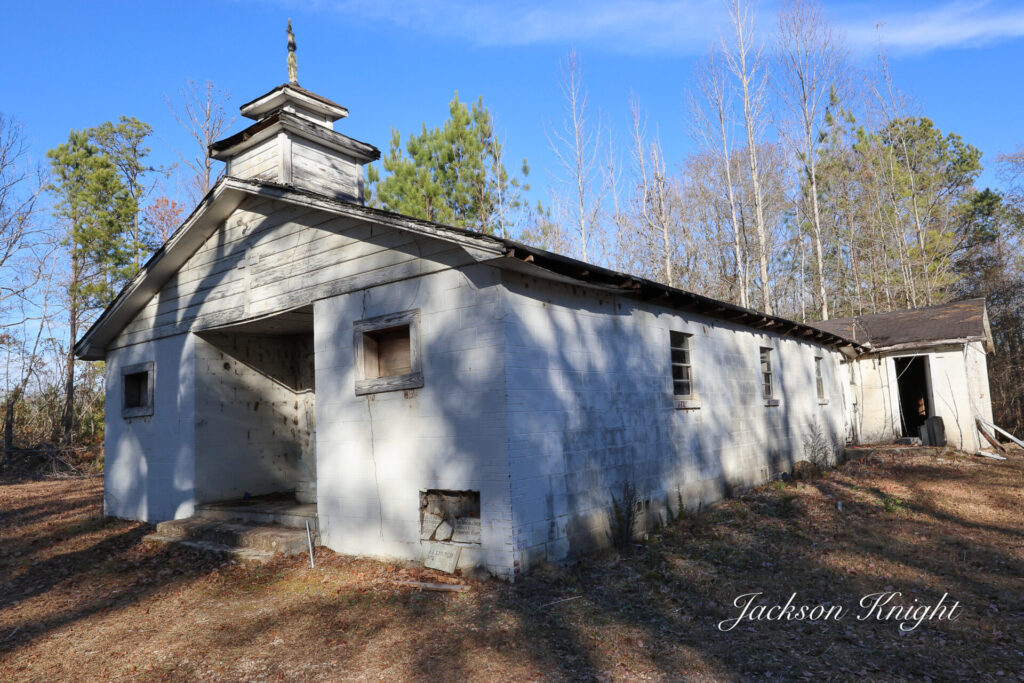
I knew of its existence before talking to my friend about the Old Pilgrim Rest. However, I did not know anything about it. Because I was working on so many different things I kind of put it on a back burner in my mind so to speak. It was one of those places that I would think about from time to time but did not work on finding anything on.
I recently started working on a picture book of the churches of Monroe County. As I was working on that project, I realized I needed to share that one in the book. With that in mind I started searching.
As I started asking questions to my sources that know the people in that area I hit on a name. Then I got a phone number for a guy. Because I had so much going on I held on to the number for a couple of weeks before I called. When I called, I got a guy named Ronnie Nettles. He was a nice guy that I immediately knew I needed to visit and get more info from.
We agreed on a time to meet up at the old church and so on a beautiful Sunday Afternoon, we left home heading that way.
New Liberty A.M.E Church sits in the Red Hills on Olivia Road. Olivia Road is off John Shannon Road. It is a short distance south of where John Shannon Road and River Ridge Road cross each other. John Shannon Road runs from Old Scotland Road all the way to County Road 56 between Vredenburgh and Buena Vista. Olivia dead ends in private property at the old church.
My wife and I drove to the old church and parked. In just a short time a pickup rode up with two guys in it. They introduced themselves and we shook hands. One of them was Ronnie the guy I had been talking with on the phone. He sent the other one back down the road to where they had been sitting to get his older brother. He drove up shortly. His name was Clevester.
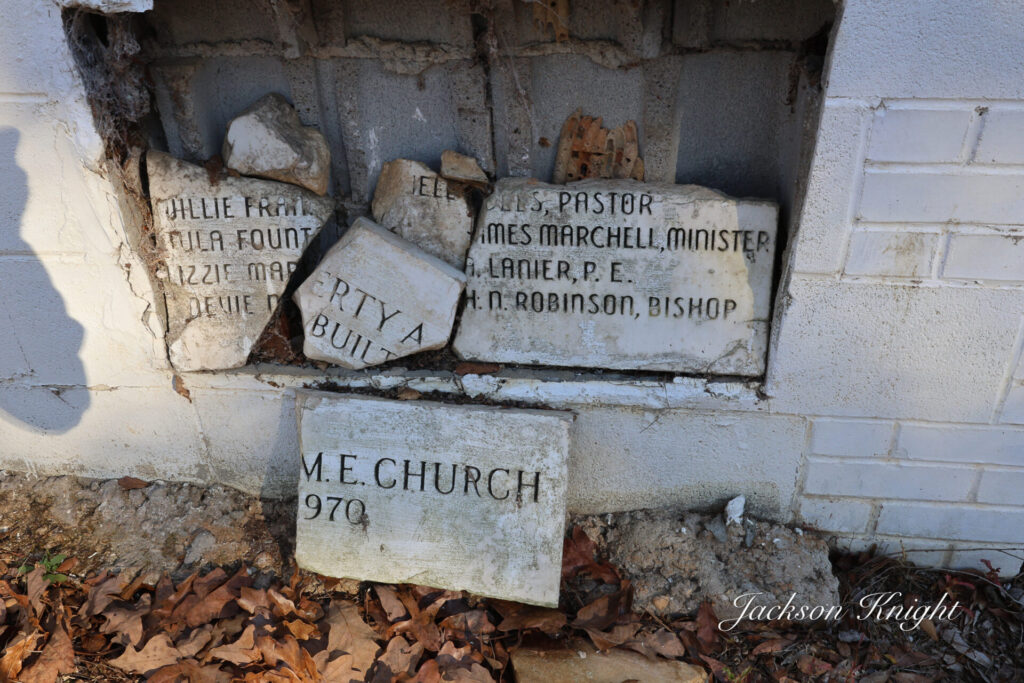
We walked around the old church and talked. It was interesting to learn. First off, I learned that the building was the second building. The first building had been sitting on the south side of the present building. It was built in the mid to late 1800’s but neither Ronnie nor Clevester knew the years.
Secondly, I learned that not only was the first building a church, but it had also been a school. It was amazing how many people used to be out in those hills where nobody is now. Now there is nothing out there but woods and miles of red dirt roads. This church was only a mile or so as the crow flies from the Old Pilgrim Rest Church. There was two if not more churches in that community.
I learned that these guys’ great grandfather Jeremiah Fountain had been the founder of the church.
As we continued to talk, we walked over to where the old cornerstone for the present building was. Unfortunately, it had been damaged in an accident. From it we were able to see that this building had been built in 1970.
As we continued to talk, I learned that they closed the doors on this one and moved to Tunnel Springs and founded another church. That one also is named New Liberty. The one in Tunnel Springs was built in 1995 and the one in the Red Hills was closed at that time. The reason for closing this one and moving to Tunnel Springs was the fact that it was in such a remote location and that the roads were in such bad shape for people to try to travel.

I had learned from the information I got on Pilgrim Rest Church that the two churches had often fellowshipped with one another until their closings. Pilgrim Rest had closed before New Liberty. These guys also told me that same thing.
One other interesting thing I learned was that while in the present location that there was always a weeklong revival the third week in September. This weeklong revival normally drew significant crowds and was looked forward to all year long.
Clevester, who was older than Ronnie also had an interesting contribution. He talked about the old original building. He said that it had two front doors and two rows of pews. He also said that it was heated with a wood heater and that it used kerosene lamps for lighting.
We briefly walked out into the cemetery and they both pointed out graves of their grandparents and other relatives who had now passed on but were significant to this old church. There were several graves that had slabs but nothing on them signifying who was buried there. I understood that there were others that were unmarked.
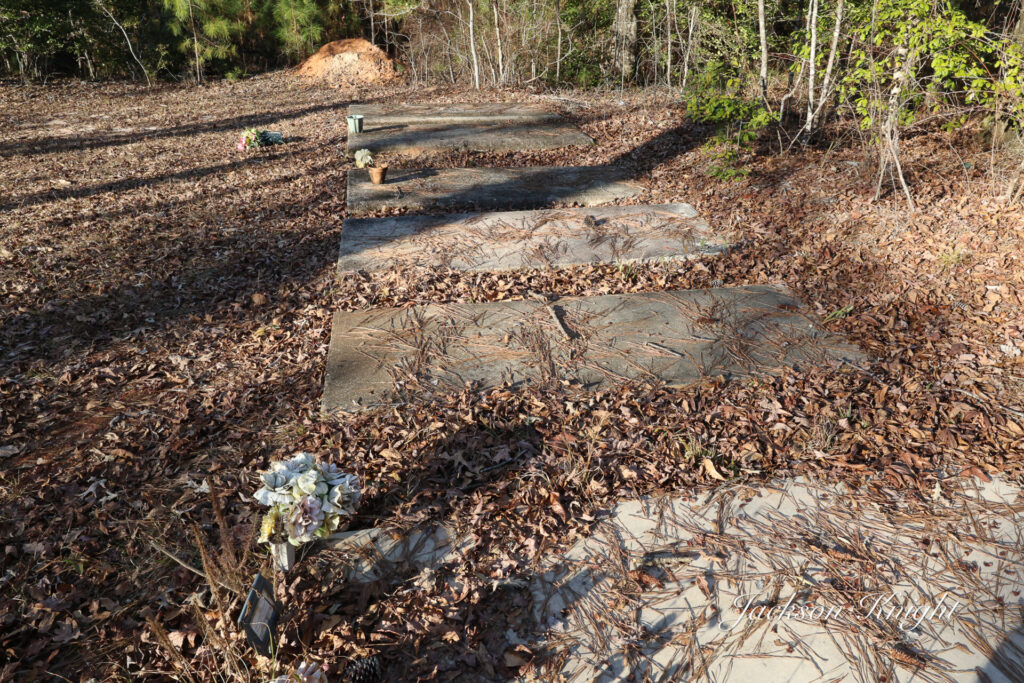
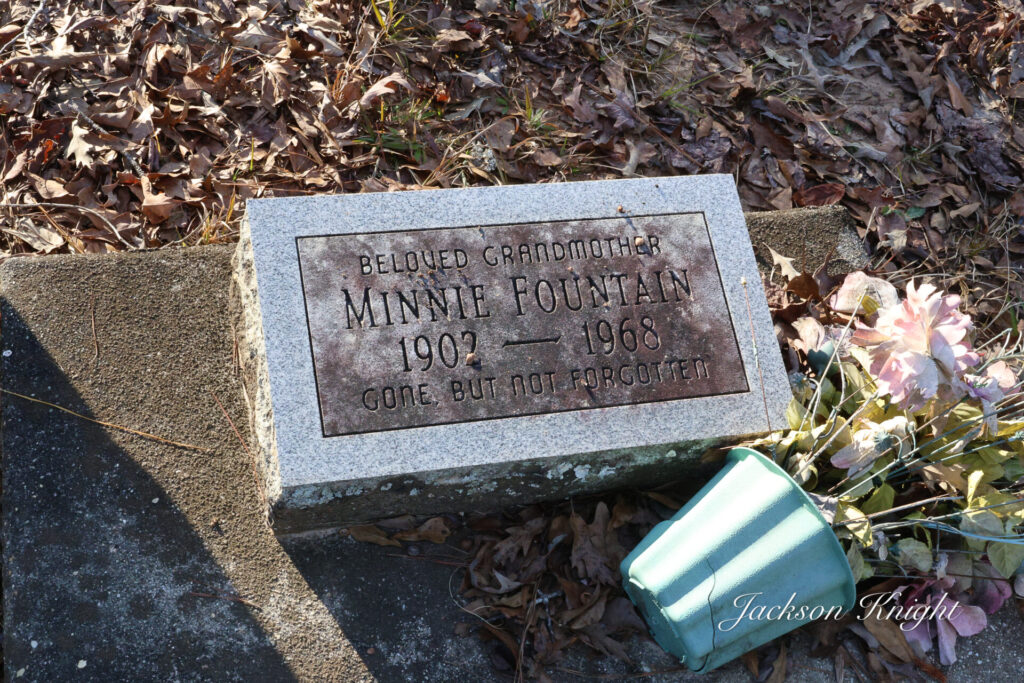
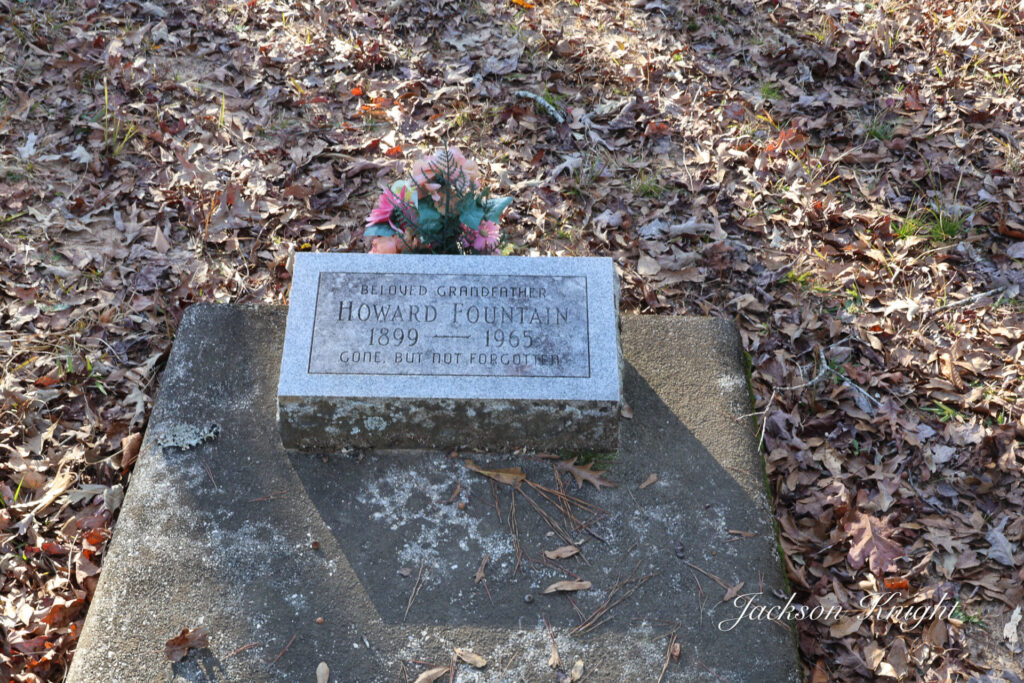
One interesting fact to me was that there was a grave, that the marker appeared to be that of a civil war soldier buried there. His name was Fletcher Fountain. That one I will have to try to research further.
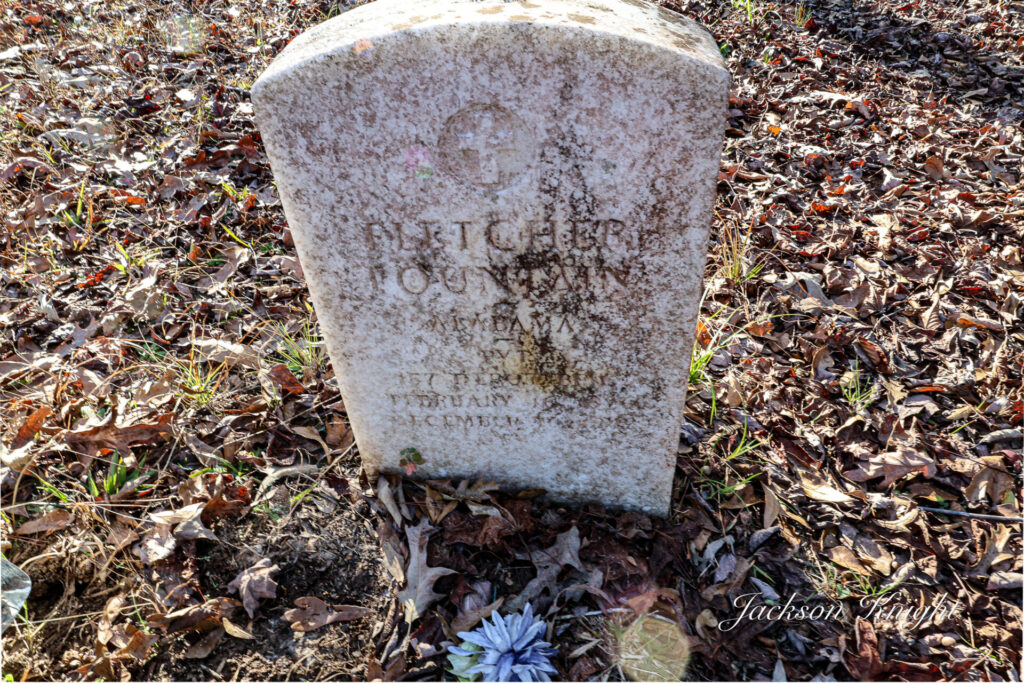
As we continued to talk, I learned that the New Liberty church in Tunnel Springs closed for the pandemic. During that time, it suffered some water damage. Now it is being worked on to re-open soon.
As I we prepared to leave and said our farewells I was swept up in thoughts. We headed out across the Red Hills heading back across to Franklin. As we crossed the miles of rough red dirt roads my mind considered many things. I thought about how many people once lived in what is now nothing more than woods for miles in all directions. I thought about what it must have been like living out there back then. I would imagine that even then although it was a populated area, it would have still been sort of isolated. By that fact I bet that there was a strong sense of community. Then as always, I pictured in my mind travel across the rough hills and hollows. I wondered how many years it was before automobiles came into that part of the world. I could picture a way of life that in many ways was hard. I also pictured a way of life that was fulfilling in many ways. It was no wonder that these two guys I had the privilege to meet today were the great guys they appeared to be. I understood the pride they must have in the fact that their family carries a rich heritage in the Red Hills of Monroe County Alabama. It was definitely a pleasure to meet them, and I look forward to seeing them again one day soon.
So many times, in life we know so much about so many things, only to wonder what we really do not know about them. I hope that made sense.
For me, I have known of The Bell’s Landing Presbyterian Church all my life. The earliest picture of me that I know of being made was taken supposedly at a wedding at that church. I was a very tiny kid. That would have been in 1957. As a preschooler I stayed with my great aunt who lived right up the lane from it. On a regular basis she would take me out for a walk, and we would walk up to that church. She would always go in and check things out and make sure that everything was ok. I would many times stay out and play on the steps while she was inside. Sometimes I think she would be cleaning up some. Other times I think she was quite possibly be praying. Not totally sure. I was very small. Needless to say, though my earliest memories as a small child contain that old church.
Although I have not been inside of it now in probably close to 60 or so years. As a kid, I went inside of it many times with my auntie when she was making her rounds checking things out.
I do not know the year, but I remember my father and some more men doing something on the top of it. I remember that my dad and Mr. Paul Miles were on top. I remember they had a rope that they were using to pull things up to work with. I remember us walking up to where they were working and putting things in a bucket that they pulled up.
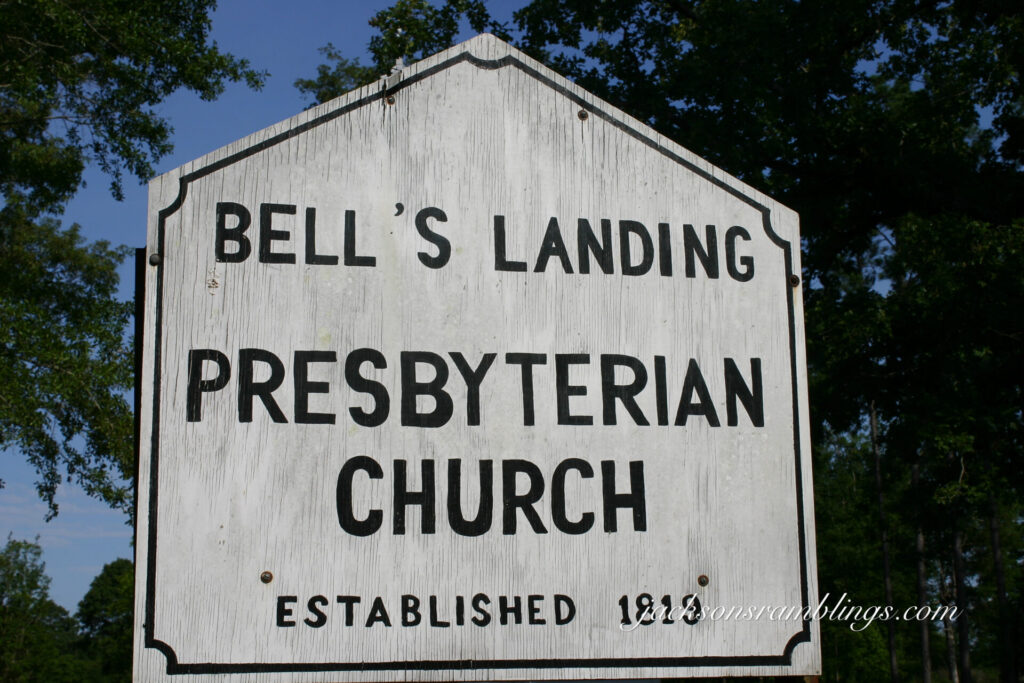
I always knew about it, but recently I started to wonder what the history of it was that I did not know.
Recently I was doing research on some things. I came across a site that had a page titled The McCants Notes. Knowing that the McCants family was a prominent family of the time in that area it jumped out at me so to speak.
These notes start out speaking of two brothers who came to Southern Wilcox County. Their names were John and Thomas McCants. John had a son about 4 years old named Thomas as well. It states that in or “before” 1816 a house was made from hewn logs for a church. This building was used until about 1819.
Apparently in 1819 or there about a dispute started concerning the land on which the log church was located. The land was originally settled by Thomas McCants Sr. Apparently it was not properly recorded. A neighbor by the name of Peter McArthur showed government documents for the property and that brought on the dispute.
At this point in the notes is stated that “tradition states” that there was a “church session”. I interpret that to mean a church meeting. Supposedly this meeting was to determine the ownership of the land. The outcome of the meeting determined that Mr. McArthur proved his title to it and therefore secured his claim.
Then we see that this angered Thomas McCants so badly that he withdrew his alliance to the Presbyterian church and joined the Methodist Church.
The notes say that at that time the log building was torn down and moved across the road to the site of the present Preston Place. It then was used for a few years as a church and then converted into The McCants Inn.
I personally am not sure about that location. I know from being with my great aunt and my grandparents so much as a child that all of the last names were familiar to me. I understand that my great grandparents had moved to this area I am thinking in the 1920’s or 30’s. I am not certain where that would be though. Possibly towards the Vredenburgh area but I am not sure.
Also, this was the first I had ever heard or read of a McCants Inn being in that part of the world.
There is an article in the Spring/Summer edition of Legacy Magazine of the Monroe County Heritage Museum that tells almost word for word the same story up to this point. It does not mention the McCants Inn.
The Legacy magazine states that The Presbyterian Church moved about three miles from its original site and about five miles from the present site. That source goes on to state that they then moved to Magnolia Academy, where they held worship services until they built a building on the present site in 1885.
Again, I do not remember ever hearing of a Magnolia Academy. I am not sure at the time of this writing where it was located but will definitely be looking for that name in anything I find document wise in the future.
Switching back to the McCants notes again I see stated that they moved to a site that is designated as the present site of the Pine Flat Baptist Church. It states that there was a Union church located there that had a slave gallery. It goes on to state that they worshiped there until the 1850’s and from there it went to Magnolia Academy.
Both accounts put the church locating at the present site in 1885. Both writings also state that that building was destroyed by a storm on May 10, 1927.
According to the McCants notes the present building was not yet dedicated at the writing of that document Feb. 12, 1932.
My family lived in that area by the 1930’s. My grandparents lived approximately ¾ of a mile as the crow flies from the Presbyterian Church. My Great Grand Parents lived on the land beside the church.
Another name I saw mentioned in those notes was a Samuel Grace. My grandparents said they got the land they lived on from Mr. Sam Grace.
For me to learn this much about this old church was an awesome experience. I had known all my life but then there was so much that I did not know. There is definitely a long rich history of that area and the community located there. As always, I am only more excited to learn more. Thank God for those that saw fit to write notes of all of this over the years so that we can find tidbits like these to go forward learning more.
Sources: (1) The McCants Letters, https://robertstapleton.tripod.com/mccantsletters.html
(2) Legacy Magazine Spring/Summer 2000, Bell’s Landing Presbyterian Church, page 7.
It’s an early December morning and I am wide awake. I looked at the clock and it is 4:00 AM. As I lay there thinking before, I get up to start my day my mind travels to yesterday. Working on my documentation of the churches of Alabama my wife and I traveled hard yesterday. I think I captured photos of 27 different churches and traveled close to 200 miles doing it. Then I got home and started sorting the photos into different folders on my laptop. Needless to say, it was a long day.
Then I started thinking about some of the places I had left to go in Monroe County to wrap up the photos of the churches. That is when I remembered I had some up around Peterman that I needed to get to.
That thought then brought me to thinking about Peterman AL. My wife was raised at Peterman. I had lived there back in the 1970’s. In 1976 I worked at the Peterman Agricultural Company or as everybody knew it The PAC. I was 19 when I started working there. I worked in the equipment shop primarily on the agricultural equipment side. I worked a lot of the time as a road service mechanic. I worked primarily on cotton pickers, and combines, and I also drove a truck a lot hauling equipment. Looking back, I am amazed that at 19 years old I could take a big truck to Atlanta and come back. In fact, the first time I ever drove to Atlanta I drove a big truck.
While I worked at the PAC I met a lot of people who had a strong influence on my life. Some as always for the worst and some that forever I will remember in the positive. Now for whatever reason I have grown to a point in my life that I have a disdain for talking about people in the negative. I know that if I hear it for any length of time I will be pulled in and doing the same thing. I do however like to talk about people whom I remember that did positive things and that is where my mind immediately went this morning.
I remember Mr. J.B. Philen. He was always very good to me. He assembled new equipment that came in like disc harrows and stuff of that nature. When I was working under the big shed across the road from the main building if Mr. JB was caught up he would come help me and it was almost like he was looking out for me. I had a tremendous respect for him. Mr. Mac Helton was my foreman. I can’t tell you how much I respected him also. He and Mr. JB were both WWII vets. Those were just two of the positive older role model men that I was able to be around in that time in my life. There were numerous others as well that helped me along with wisdom and passed along knowledge to me that even to this day all of these years later I still remember.
At the writing of this story, I am 66 years old. In my 66 years I have seen some incredibly talented craftsman. I worked 22 years in the papermill as a millwright and saw some folks that could do things that you would say, “that can’t be done”, but they did it. Of all that I ever ran into or worked beside however one stands head and shoulders above the rest who made an impression on me.
One of those men that I met while I was up in Peterman was a man named George Lee Chandler. Mr. George Lee as we all called him, lived up on the Hill on what I would way was the southwest side of Peterman. He had a small shop out a way from his house. I saw him do things that I will remember when I am 120 years old if I am blessed to live that long. They made that kind of impact on my life. He was a man that as the old saying goes could take chicken manure and make chicken soup. He could take nothing and make anything. If he could not fix it then it wasn’t really broken. Almost 50 years later I still marvel at some of the things I saw him fix and even am amazed at what others told me that they saw him do. Mr. J.B. Philen told me one day that he had seen him straighten the barrel on a shotgun that had gotten knocked over and bent. That one I never saw but I did see several he did do.
One of the first things I saw him do that amazed me was there was a tractor that came in with a hole in the side of the engine block that a connecting rod had come loose and went through. I am not sure how much an engine block would cost at that time nor possibly if one was readily available. All I know is the man the tractor belonged to told them to “go get George Lee to look at it”.
Mr. George came in and looked at it. He told them to pull it down and he would fix the block. So, they pulled it in the shop and stripped the engine to the bare block. He took it out to the steam cleaner and steam cleaned it for what seemed half a day. Then he washed it with degreaser. Then he ground the hole all around and beveled the edges. An engine block is cast iron, and you can’t burn it with a torch. There wasn’t a way to make a clean cut to get a piece to fit the hole. To get a piece to fit the hole he went out to the junk yard and found an engine out there that was messed up. He then took a hammer and busted some big pieces out of that one. He then took those pieces and brought them in and cleaned them up really good with degreaser. He then ground a couple of those pieces to the size and shape to fit the hole in the engine block. After that he tack welded those pieces into place.
When I got to work next morning, he was heating it with a rose bud on an acetylene torch. It appeared that he must have been working on it for a while because it appeared to already be getting hot. He was slowly heating the piece and a large area around the repair. I wasn’t able to stay with him and watch the entire procedure, but I was able to see most of the steps as he did them by observing what he was doing passing back and forth through the shop while doing my work.
He would heat the metal and check the material with a crayon that was designed to melt at a certain temperature. It seemed like he didn’t get in any hurry while doing this. It seemed like he heated for hours. When he got it where he wanted it temperature wise, he then welded the piece into the hole. He would weld a little while and then heat with the torch a while. Every few minutes he would check the temperature with the crayon. When he finally got it welded to his satisfaction he backed off and still maintained temperature on it. He then took two diesel fuel heaters that had blowers in them that were in the shop. He focused them directly on the spot on the block and left them blowing. The next morning when we came in to work there was one of the heaters still blowing on the block and it was backed a good distance away.
He came in after an hour or so and took that one off and left the engine block laying on the floor the rest of the day. The next morning, he polished the side off with a wire brush on a grinder and painted it John Deer Green and you could not tell it had been repaired.
I would have given anything to have been able to work with him throughout the entire process. I can’t say with certainty how long the tractor ran after that repair. I know I saw it around for a lot of years after that and I never knew of it tearing up. I do know that I was incredibly impressed with that repair. It just amazed me that Mr. George could take what appeared to be nothing and do that kind of work.
As long as I can remember traveling up Al 21 going north, I have seen a sign that says Snow Hill Institute. I have learned over the years that this was indeed a very famous school.
Until I started doing my focus totally on the Black Belt, I did not know that much about it other than it was an old school for Black Children.
I was born in 1957 and remember the goings on of the Civil rights Movement of the early 1960’s although I was a small child. I know that in the early 1970’s the laws concerning segregation caused many schools that had been for black children to close and students both black and white were bused to other schools to satisfy that all were desegregated. Because of that fact many small country, and even some larger town or city, schools closed and bigger ones were built or added on to.
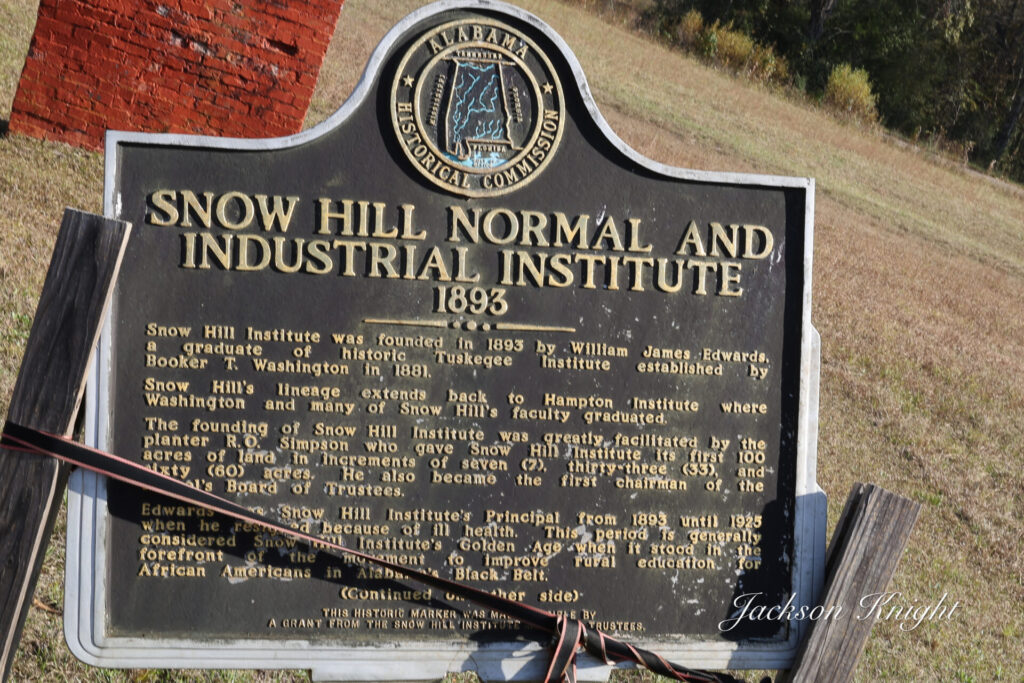
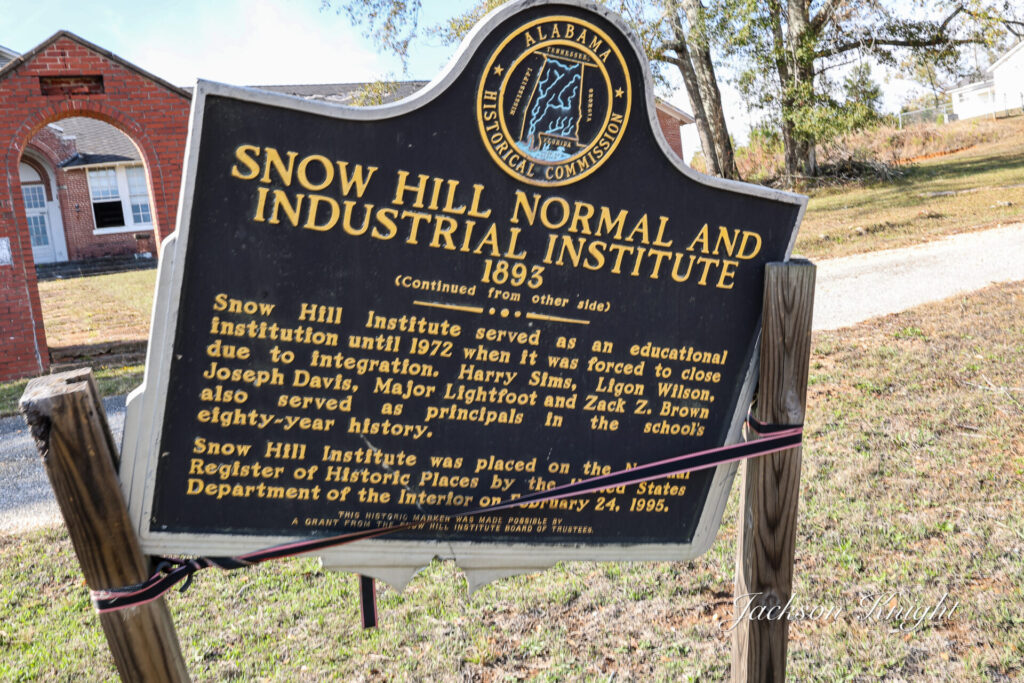
I saw Snow Hill Institute on a Historical list of Black Belt things and immediately it hit me. I know “about” where this is. I have never actually driven through and seen where it stands nor what it looks like. Like always I had to do some research.
Naturally one of the first places I went to learn was the internet. As with more times than not the first thing I found on it was at encyclopediaofalabama .org. Here is what they have to say about it. (1) “The Snow Hill Normal and Industrial Institute was an African American school founded in the Snow Hill community of Wilcox County in 1893 by Tuskegee Institute graduate William J. Edwards. It operated as a private academy until in 1924 and the boasted 27 buildings, 35 employees, and some 400 students at its height. The building then served as an Alabama public school until 1973, when court-ordered desegregation forced its closure. Of the original campus, eight buildings survive. The site, which includes the burial plot of William Edwards, was added to the National Register of Historic Places in 1995.”
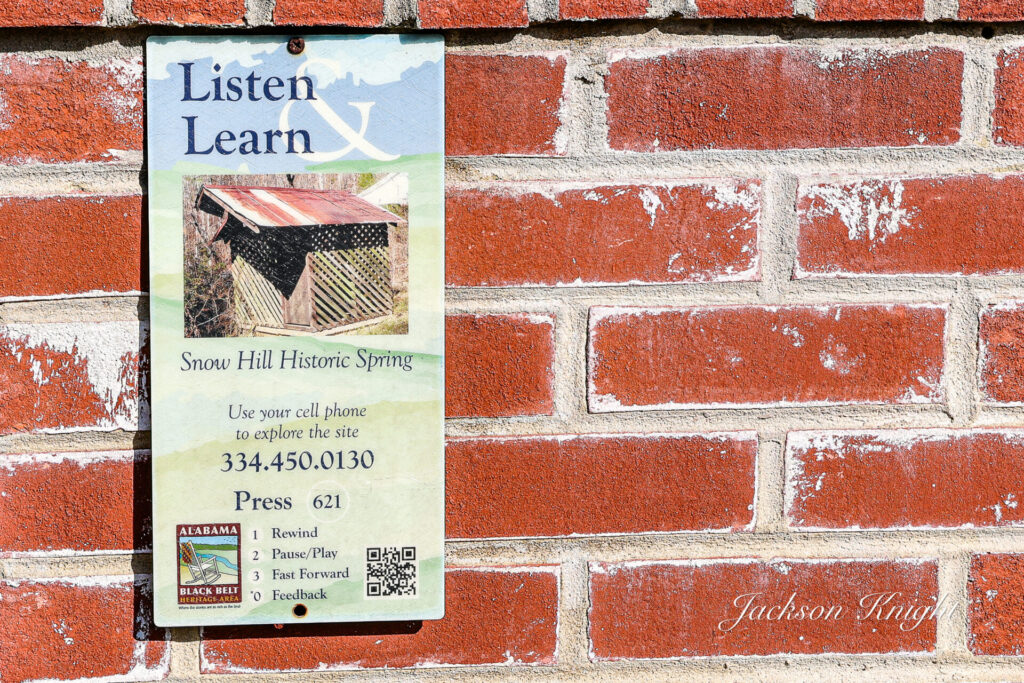
Like so many of the historical sites we have there is multitudes of information online with a simple search of their name. Snow Hill Institute is no exception.
Because of that fact I rarely add much more because of the ease of research through search engines it is easier to just make that reference instead of trying to compile it and then make sure everybody is cited as they should be for their hard work.
As I stated earlier, I had known about Snow Hill somewhat. I did not however know exactly where it stood other than the sign on Hwy 21 pointing in to it.
My wife and I were out rambling on this particular day, and I saw the sign. My wife had asked me about it earlier on another trip recently and I had told her what I knew, and we did not take time to go in to find it. Today we had time and here we went.
I turned from Hwy 21 and headed up towards the school. I was not sure what I was even Hunting. We came to the brick sign at what we learned was the entrance. Then we headed up the narrow-paved road into the school. That is when I saw it.
My first glance was shock. I was actually disturbed. I saw what had been these beautiful brick buildings that were now going away fast. It was obvious that there had been roof damage at some time in the past probably from a storm of some kind. There were remnants of blue tarps on the roof.
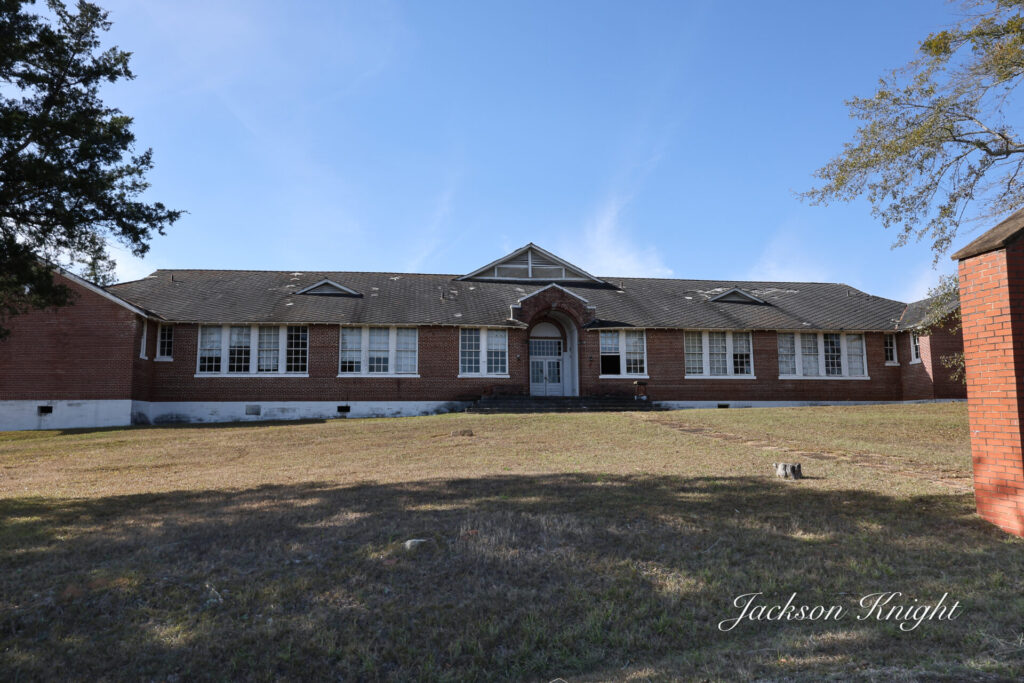
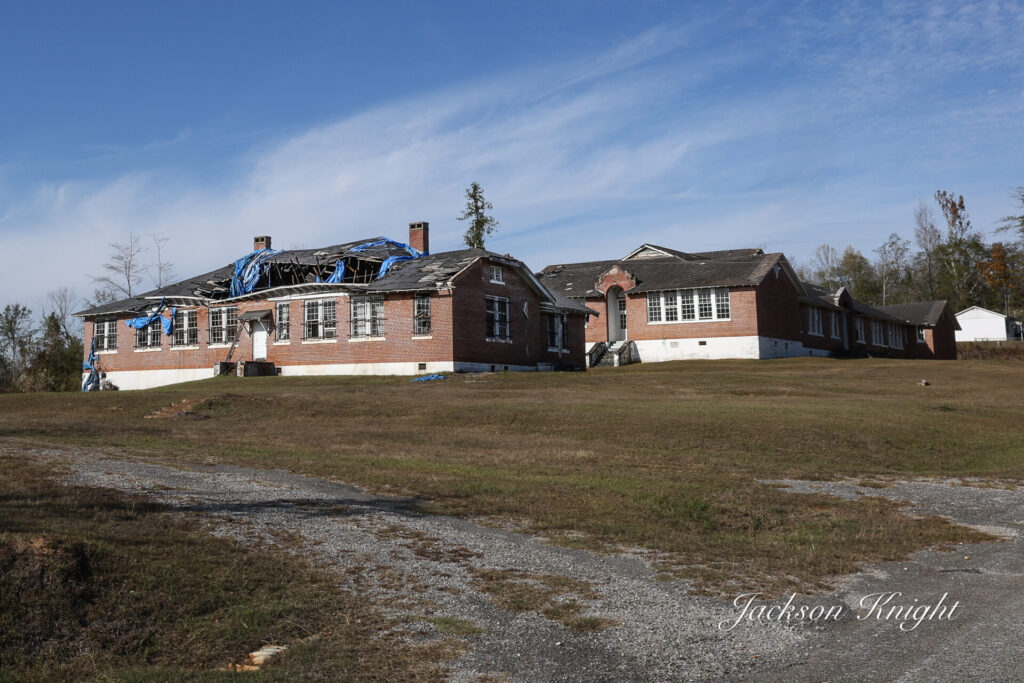
The roofs were falling in in places. It was a sad time for me. I do not know what I was actually hoping to see but in my expectations something as important to history of Alabama as this I felt would be, and rightfully should be preserved. Instead, they were falling in and fast going away.
We drove up the road and I stopped several different times and took photos documenting best I could and then we would move a little further in and I would do the same. We moved on up to the top of the hill and then turned around and came back out. For me it was a solemn time. Any time I see things of great historical significance in trouble it does something to me. I want to see them all preserved.
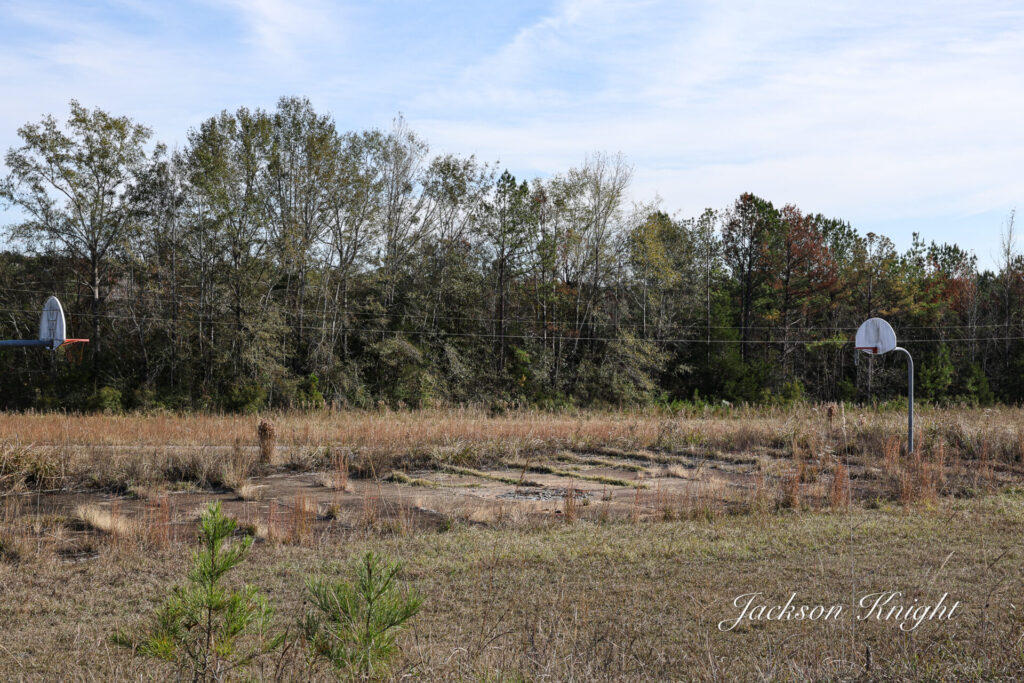
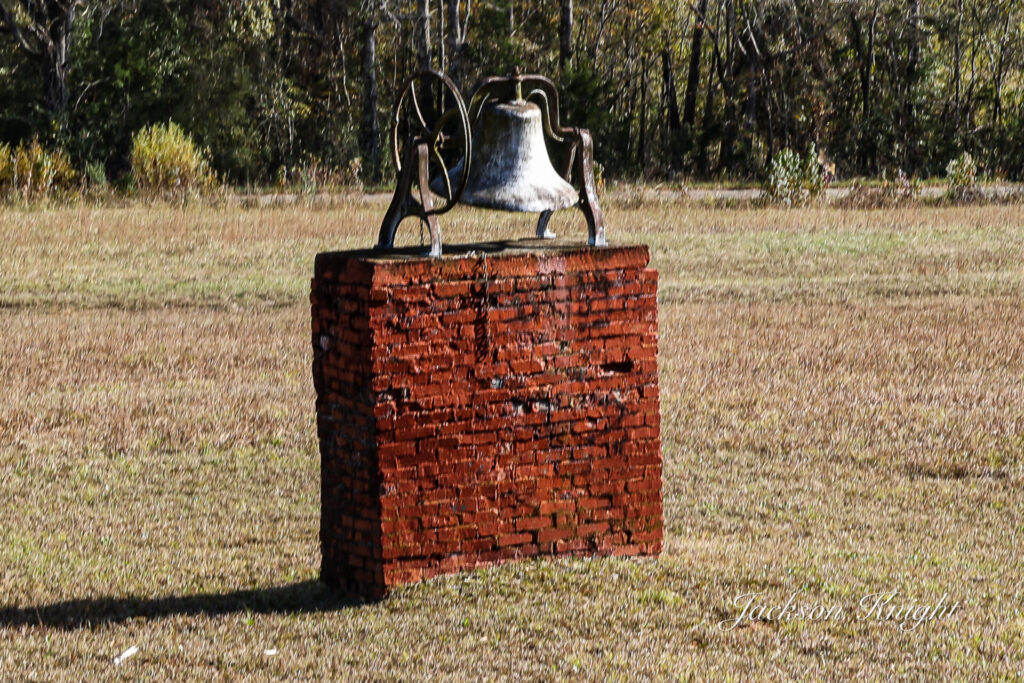
As always when I left my mind went to racing. I could imagine what it was like for all of those young people at that time in history. I could imagine what the classes were like. I could imagine that there were things like vegetable gardens there. I could imagine what great people came from this place and the accomplishments they were able to achieve because of the education they received here.
Hopefully in the not-too-distant future something can be done to this great historical place and it can be preserved. Like so many others of great significance it is slowly decaying and going away so that a future generation will not be able to see what it was like and know the great things that were accomplished here.
( 1 ) https://encyclopediaofalabama.org/media/snow-hill-normal-and-industrial-institute/
I have been to Pine Apple Alabama many times in my life. When I was in high school, I had friends and family who went to school there. I visited there many times over those years. As time went on, I would go through there from time to time if I was out rambling and in the vicinity of that part of the country. It seemed like the time intervals got longer and longer between visits.
It had been a good number of years since I had been there up until I started rambling, taking photos, documenting, our beloved Southland a couple of years ago. After I went back one time and took a few photos in the area it seems like I am drawn back more and more frequently.
When I started visiting again, I started hearing about this big day that they have every year in November called Hunter Appreciation Day. This year was the 27th year that they have had it.
From the best of my understanding, it started as a way to show appreciation for all of the hunters that came in and enjoyed their recreation time in the Pineapple area. That area of the Black Belt is a very rich area in wildlife. Many hunters bring their families and friends into the area and enjoy their recreation there. Over the years many have purchased property, or leased property in the area specifically for that purpose. Because of the benefit that they were for the community as a whole, the Appreciation Day was born. Since the last Saturday of the month of November is normally the opening day of gun season it appears that it was the ideal day to hold it.
I had heard of this special day for years but for whatever reason never went. Normally I would hear of it in past tense. In other words, my memory would be jogged when I heard somebody mention that they went to the event.
I had full intentions on going two years ago and let it slip up on me. Then last year I had plans to go for sure. Yep, I missed it again. This year I made up my mind that I was going to make it. I would think about it every day or so. Beings that I have been involved in researching things in the Black Belt a lot recently I would be in the area more often. I got reminders every few days in some form.
My wife and I had been staying in the motorhome at Isaac Creek Campground in Monroe County for a few days. We made a stew for Thanksgiving Lunch and cooked some hoecakes of cornbread on the griddle. Then the day after we rambled the West side of Wilcox and a small portion of Clarke County.
We watched movie for a while in the motorhome that night. It was just a well-earned time of relaxing to get away from the grind.
This morning we got up early. Had a normal breakfast and showered and headed to Pine Apple. It was a little over an hour drive.
As we got there, cars were parked everywhere. We rode a good way out and parked beside the highway and walked in. It was definitely a sight to behold. The main street was lined with vendors down both sides. The street was blocked off and people were able to walk freely down the street and enjoy the day.
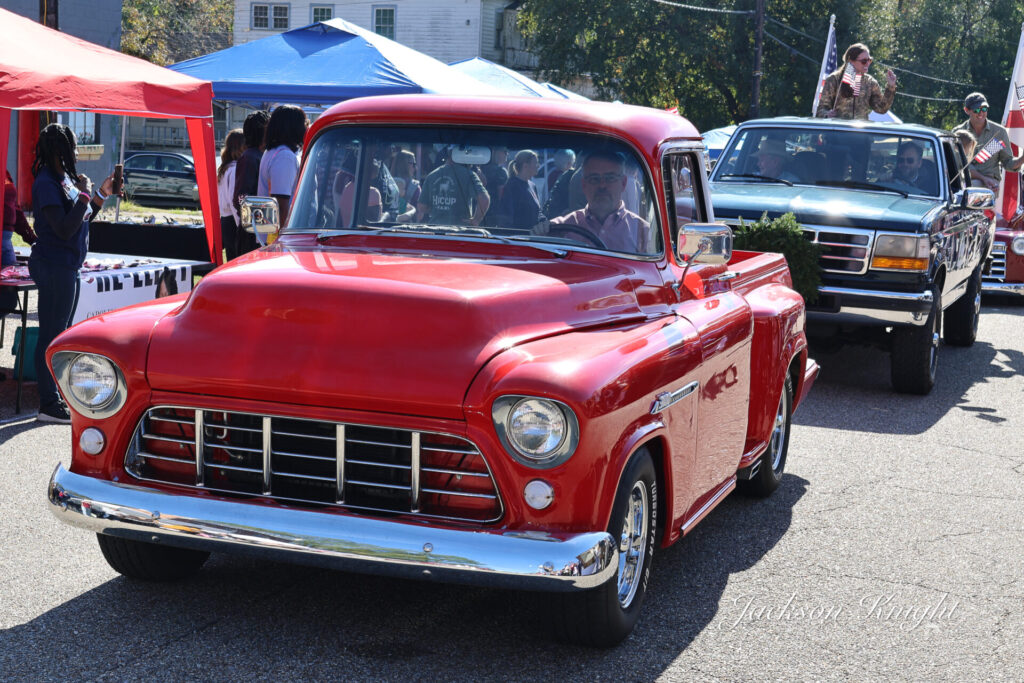
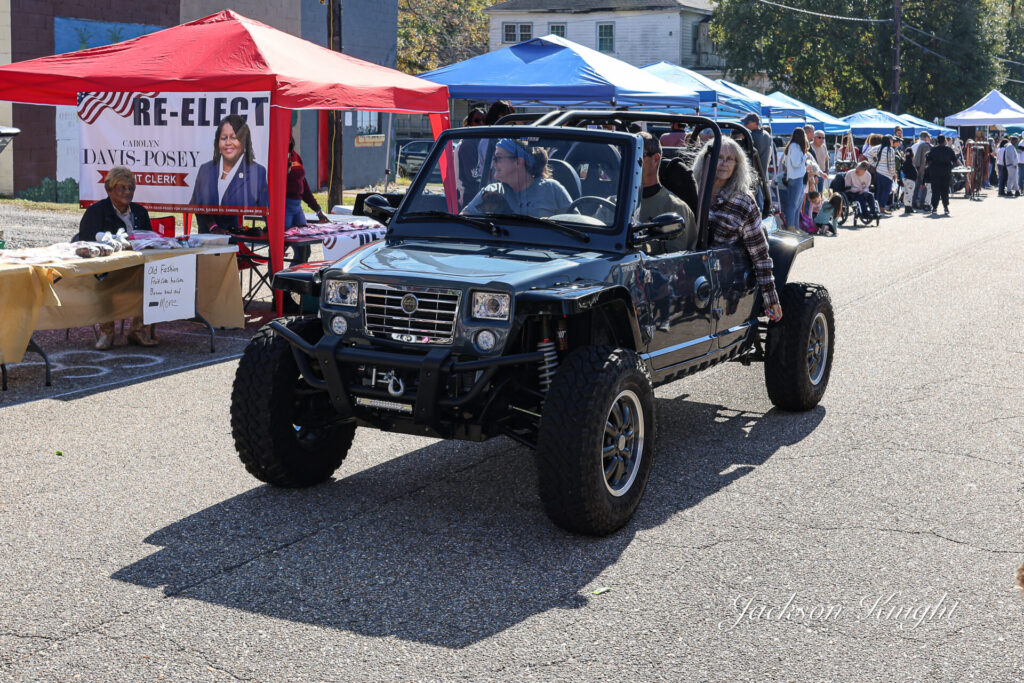
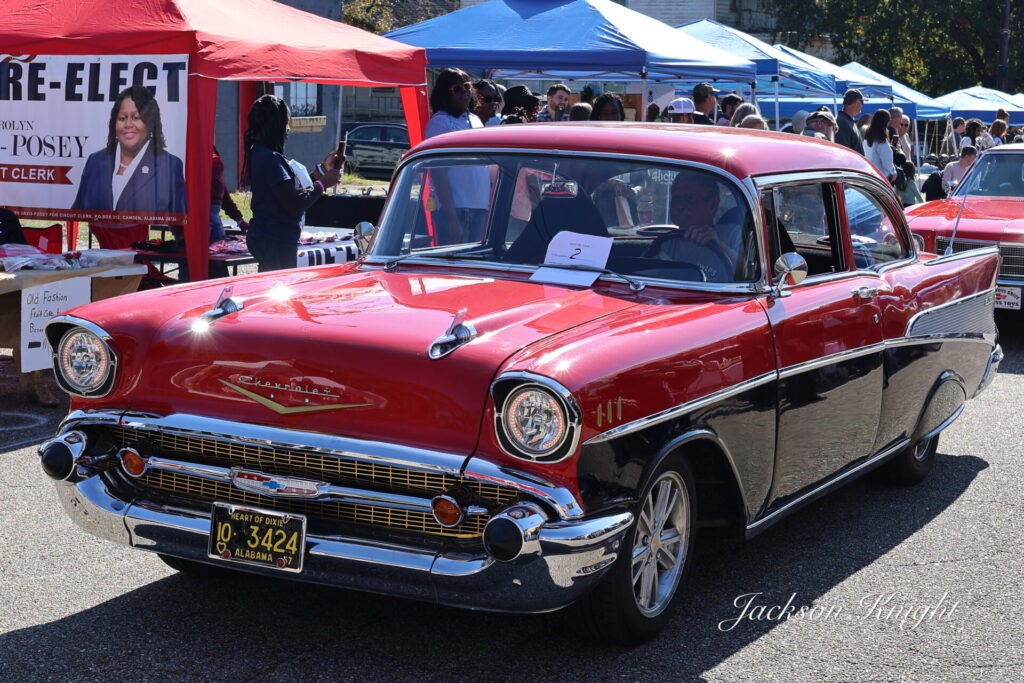
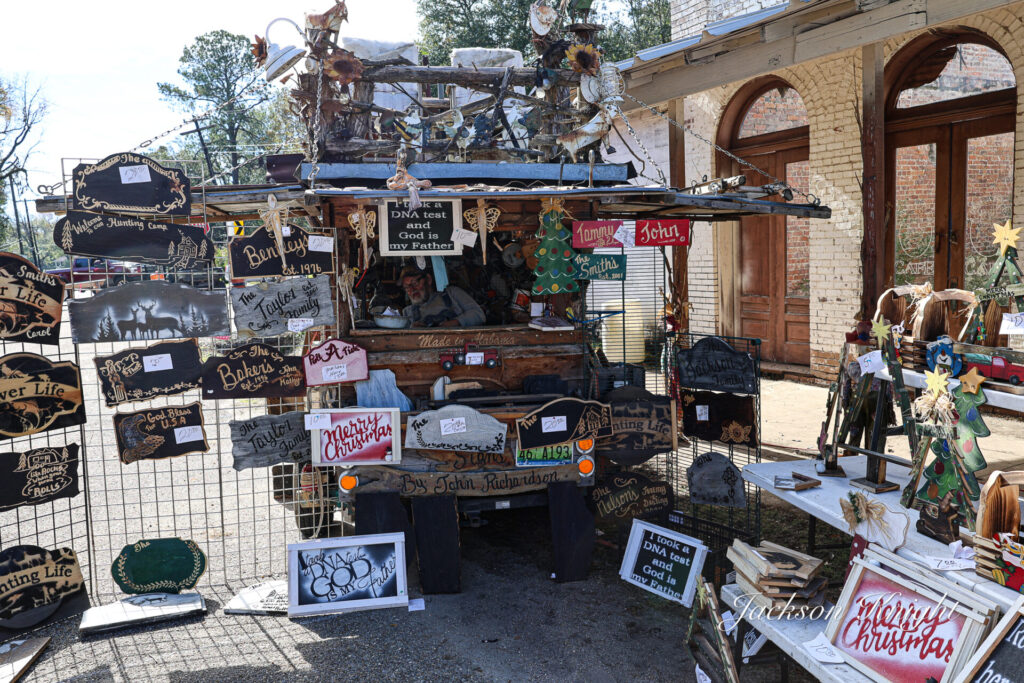
It was an awesome time. We saw friends that we had not seen in years. We walked the line of booths and enjoyed the arts and crafts of too many different types to even think about keeping up with. We visited a while, reminisced a while with those we saw we knew. As normal I visited a while with a lot I did not know. My dad always said I could start a conversation at a gas pump a thousand miles from home with a stranger, and talk thirty minutes.
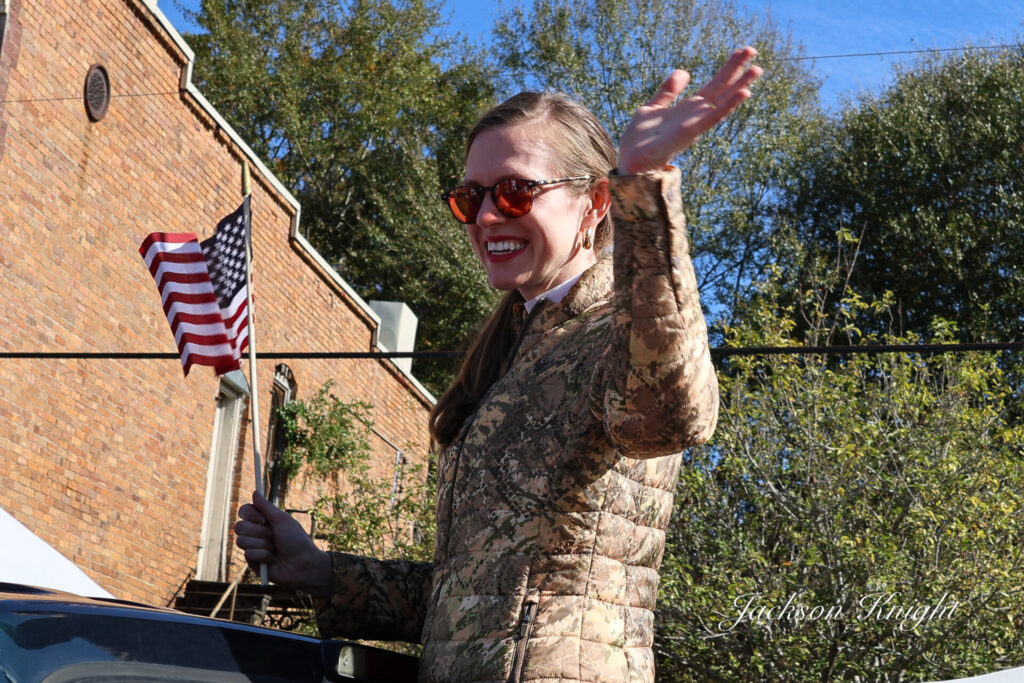
There were politicians there who were campaigning for office. I got to see Caroleene Dobson who is running for congress. There were others running for local office. Since I don’t live in Wilcox County they were not on my radar nor me on theirs.
There were antique cars. There was a show and then a parade which was very neat.
My pick, of all of the vehicles there was a dually 1930 Model A Truck. I thought that was the neatest thing.
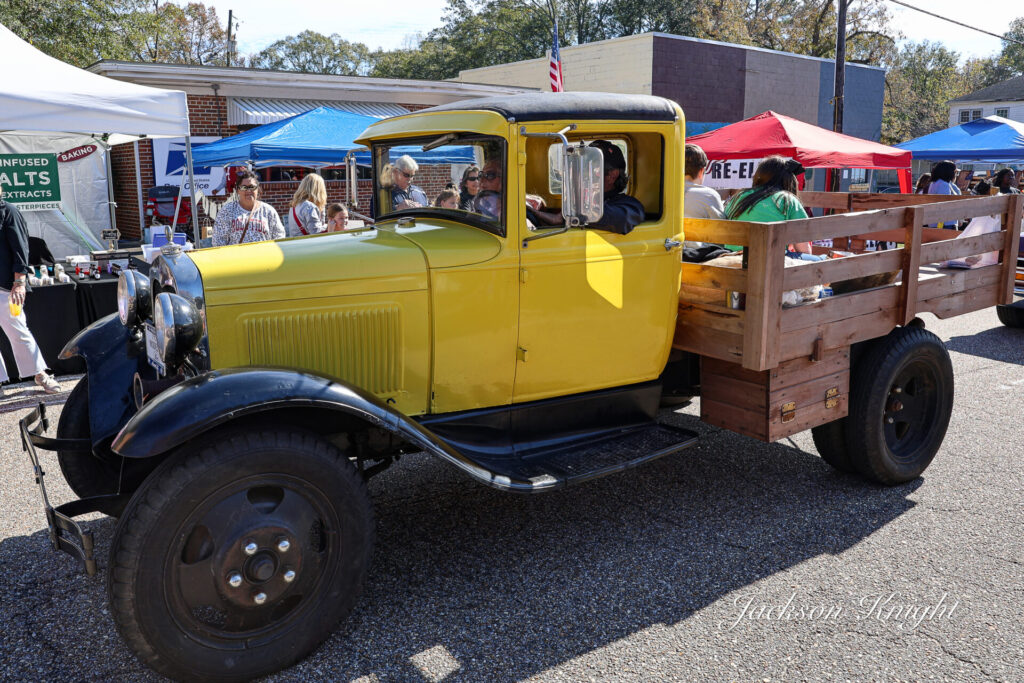
I saw another craftsman who had some very interesting game calls that was awesome to me as well.
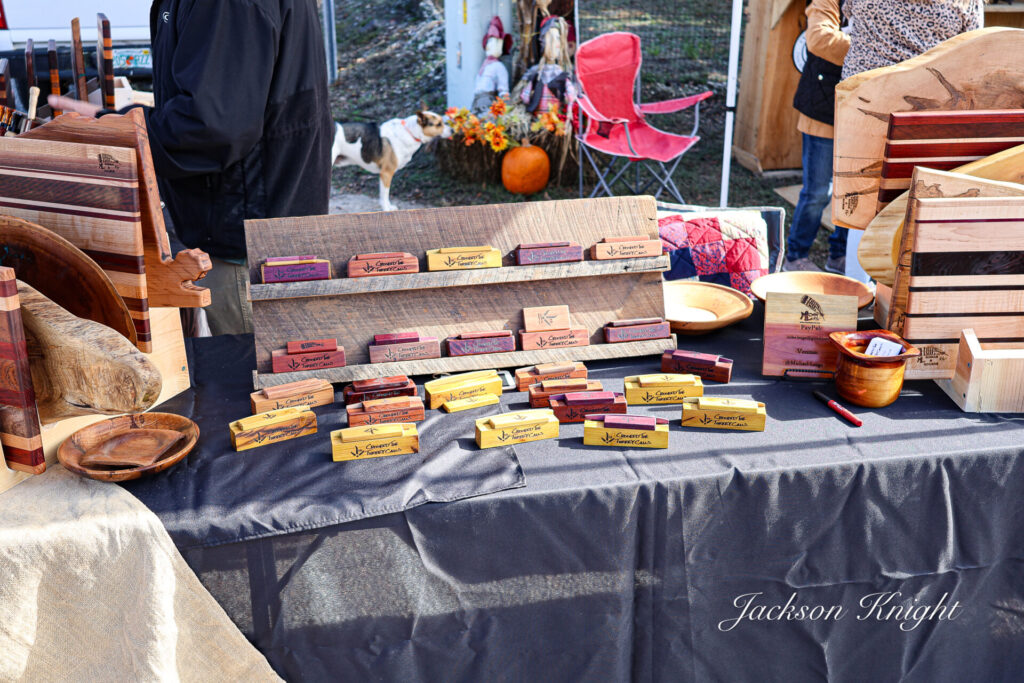
Of course, we had to stop by a food booth. There were several of those there as well. There was about any kid of that kind of food you would want there. Rib sandwiches, grilled turkey legs, alligator on a stick, burgers, fries, sausage dogs, various kinds of barbecue, and of course funnel cakes.
Hunter Appreciation Day at Pine Apple Alabama is definitely something that is a family event and I definitely intend to put it on my schedule for next year. I am not affiliated with it in any way, but I highly suggest to anybody that can come and support this wonderful event next year. It is definitely a great day with all there appearing to enjoy themselves.
This is just one of the many great events held in our beautiful historic Black Belt Region of Alabama. Hope to see many more of those as well this coming up year.
I am forever enthused at what lies around the next corner. Always no matter where you turn in our beloved Southern Black Belt Region there is something to find that you did not know. Another story, another interesting person, place, or thing.
I have been tied up for the last week working on projects concerning other business and had to refrain from rambling. Here it is another week coming up and last night my wife said, “it is supposed to rain mid-week.” If we are going to ramble, we need to do it tomorrow. Ha ha, she didn’t have to twist my arm. She is normally the one that is the responsible party in this relationship and tends to what needs to be done. I am normally the one that wants to be out rambling.
Last night I started scouring the maps. I had intentions of covering the area West of AL Hwy 21 and South of AL 10 as much as possible in the time we had. If you know the area, you know it is a sparsely populated area. Many miles of dirt roads with long distances where there are no houses of any kind.
Looking at Google Maps I found several potential things that I wanted to investigate in that area. As I continued looking, I found a church that jumped out at me. It was called Rosebud Lutheran Church and Rosa Young grave on the map. I later learned the proper name was Christ Ev. Lutheran Church and School.
Of course, I had no clue who Rosa Young was, but I had a strong awareness of the Lutheran Churches and Schools that had existed many years ago. I could remember the one at Tinela in Northern Monroe County. I actually remember as a very small child that they had school and church there in what would have been the very early 1960’s.
I also remembered that there was one North of Vredenburgh in Southern Wilcox County on the dirt roads that I always thought was one. I did not remember it being open, but I do remember going up through there and a guy I knew lived there on the property. There was also one out from Buena Vista. Although, I did not know where they were I had always heard that there were others. The ones I knew of closed to the best of my understanding and remembrance when they built a new one on the South side of Vredenburgh. That one was larger and from my guess consolidated several of them into one. This would have been in the early 1960’s. I remember they had a school bus that I think was blue that served the school. I was very young when this happened, but I definitely remember much concerning it.
Because of my curiosity over the years, when I saw that one on the map it immediately jumped out at me. I knew that if there was a way, I would find it on this trip. We wound our way up through the hills from Beatrice checking out some other places that I had found on the map that were interesting. Because I am trying to be as thorough as possible locating things in an area, I was doing my best to get to as much as possible that looked like a possibility.
We ran miles of dirt roads some of them were pretty rough. With a rain coming in some of them would be definitely four wheel drive all the way in a Jeep. This time they were just slick and boggy. Next time will be a different story if it rains. We went through from old Nadawah across the hills and came out on AL 265 and then we turned back across the hills again from Fatama towards Neenah. Then finally in towards Rosebud. Watching my map closely we were able to find it with no trouble. Rounding the curve in the road there it stood.
There was a green building trimmed in white. A lump came into my throat. I remembered those colors or in my mind they were the same anyway. The building looked to me almost exactly like the one I remembered from my early childhood at Tinela. As with every historical thing like that I see that for whatever reason my mind went elsewhere. It went to the old building on AL 41 out from Tinela. I remembered it when it was being used. Then I remembered it going down. Decade by decade slipping into oblivion being reclaimed by nature. In my mind they were exactly the same.
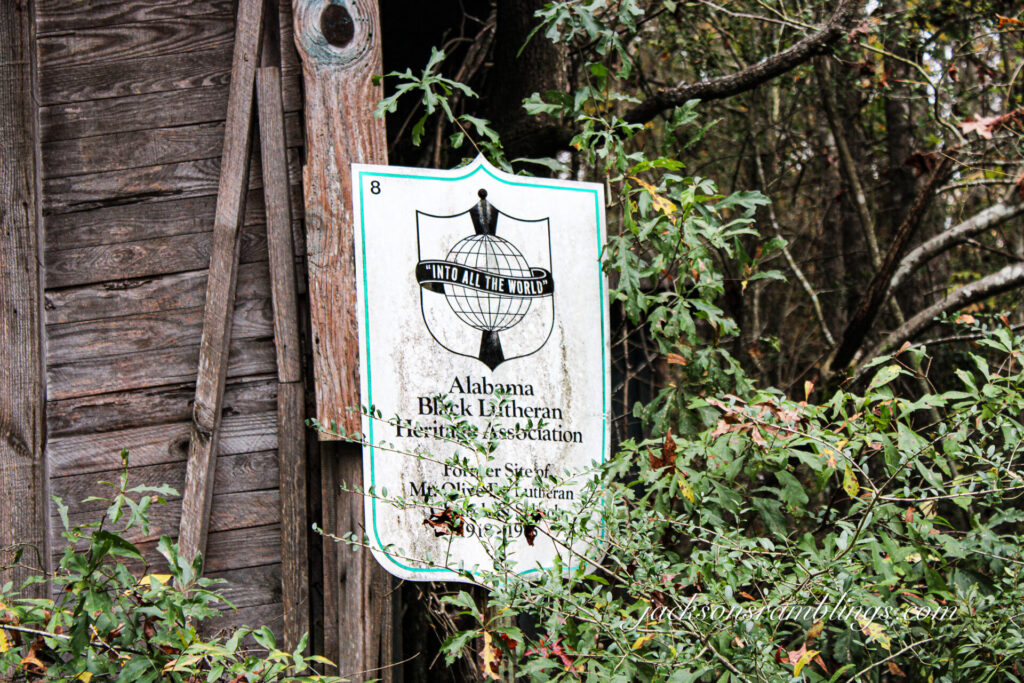
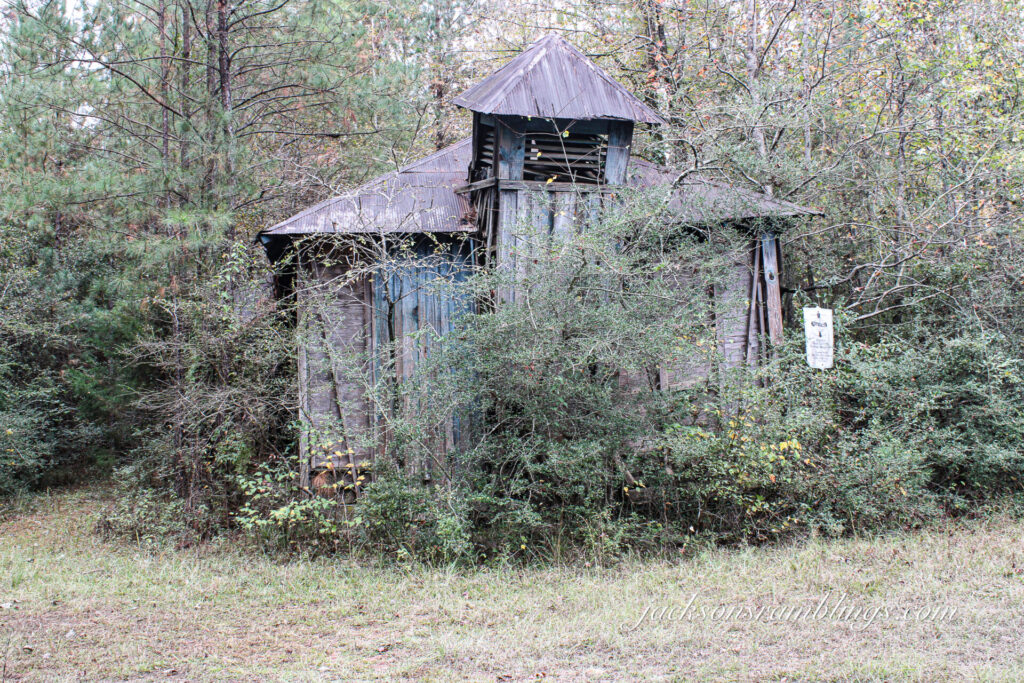
Mt Olive Church School (click link to read)
Then I started to focus on the rest of the grounds. Directly in front of the church was a grave surrounded by a metal fence. I then realized that this was the grave of a woman named Rosa Young. There was a small paragraph long introduction to her on her grave.
Now if you know me, you know I had to find out more about this woman Rosa Young. They always say that Google is your friend. So, I went home and entered her name.
The first page that came up was the Encyclopedia of Alabama with her information.
https://encyclopediaofalabama.org/article/rosa-young/ From that information printed there I learned that she was known as the “Mother of Black Lutheranism in central Alabama. She was a strong advocate of education of rural children.” Rosa Young was born in 1890 and died in 1971. According to the above link, “she was instrumental in founding and promoting the development of Lutheran schools and congregations in the Alabama Black Belt.”
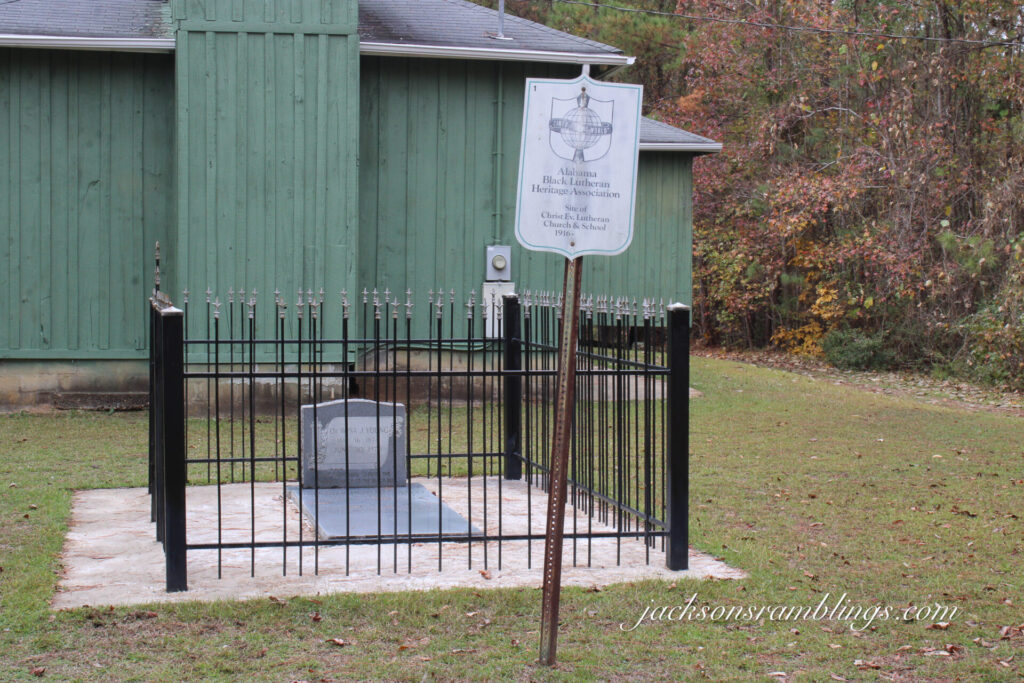
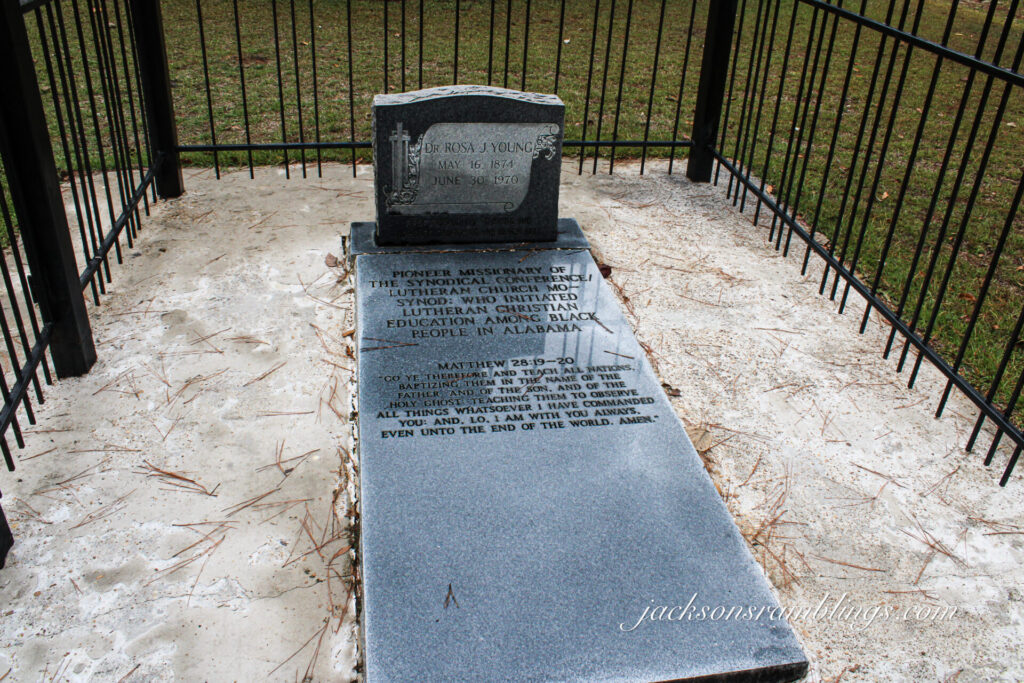
The story on the Encyclopedia of Alabama website is a great story and I will not try to elaborate more because the link to the information is there. One thing in the article in that publication however I strongly disagree with is that it states, “Young and a man named Nils J Baake visited these sites and founded schools that became centers of Lutheran congregations in Buena Vista, Tilden, Tinela, and Midway (all in Wilcox County) in 1916 and Ingomar (in Dallas County) in 1919.” I personally know for a fact that the one at Tinela, and Buena Vista were actually in Northern Monroe County. Tilden appears to have been in Dallas County, Midway also appears to have been in Monroe but at the writing of this post I have not located its where-a-bouts although I intend to if possible.
The Mission at Vredenburgh was a short distance North of the Monroe/Wilcox County line almost directly above the Apple Grove Church. Nothing stands visible there today however according to land ownership maps the Lutheran organization still owns the 5 acres there.
As I stop and think about this information that I have accumulated I can only imagine that it was a monumental feat for this woman raised in rural Alabama in those times to accomplish the feats that she did to bring education to this part of the Rural South. There are volumes more written about her online and in books so I won’t try to quote any more.
Rosa Young is one more great American that should be remembered for centuries to come as a person in our great land that made a difference. In my opinion she is indeed a hero of our beloved Black Belt.
Several people have asked me the question, “Why the Black Belt”?
Here is the best explanation I can give. Ever since I got back into photography a few years ago I have been sort of searching for a niche. I love drones, history, the outdoors, and writing stories.
I have retired from both my lawn service business and as the pastor of a small church. My wife and I love to get out and ramble. Our health is good. Normally when I am out and about she is with me.
I have been for quite a while shooting drone photos and videos of forest fire lookout towers. I bought my first digital SLR camera a couple of years ago. I had of course always since I was a kid loved photography. In the 1980’s and 90’s before digital I shot a lot of 35mm photos. I had owned numerous cheap digital cameras and taken a lot of photos with them also.
I felt the need/desire or whatever you would term it to travel and document the various things of our beloved southland. Even back with 35mm I did that often as well as some wildlife photography. First off, I started doing drone videos and putting them on YouTube. As that progressed, I started shooting photos of other things. I especially liked documenting pre-1900 churches.
I had already traveled over several counties in Alabama and some in Mississippi taking photos of the small towns. Midsummer of 2023, I started to try to visit all 67 counties in Alabama. I actually wrote a blog post on doing that in August. Rambling The Southland.
I decided to work the area East of I-65 from the bottom of the state to the top. Then, I would work the area from the bottom to the top on the West side of I-65. I went out four times. I would leave home, hit as many small map-dot towns as I could in a day. Then I would spend the night in my van and go again the next day.
I did this four different times. Three of those times I ran almost 600 miles each and put in a lot of hours. The fourth I ran over 700 miles. I would take so many photos doing this, that it would take me two weeks several hours a day, after I got home, to just go through, sort and locate where all the photos were taken. After that even more time to process and share to social media and on the website.
I was thoroughly enjoying doing what I was doing and planned to continue till I got all 67 counties. When I got up as far north as Hwy. US-80 which had me working the Eastern Black Belt I started to realize that I was trying to cover too much territory at the time. I was taking hundreds of photos, but I was trying to cover too much too thinly. Doing it this way just did not give me enough time to find out anything about what I was photographing. I was just getting photos but not getting the story behind the photos.
That is when I realized that I needed to focus deeper on one area and stick with it. Because there is so much of what I love in the Black Belt, that was where I needed to be. So here I am.
My goal now is to focus for as long as it takes on primarily the Western, Alabama, Black Belt. Western, meaning the areas primarily West of I-65. I do plan at some point to go back into the Eastern part again and do it the same way. My plan is to capture photos of as many of the pre-1900 churches as I can locate as well as any other things of historical interest. Along the way I will document whatever else that I run across that is interesting, unusual, or basically that catches my attention. I will focus at times on wildlife and primarily birds. The Black Belt is very rich in birds, and I feel that is something else I would like to keep documenting.
As I document the churches, I post them on my website under the tab Black Belt Churches. That page has an index of the counties. Under the tabs of the counties are the links to the individual pages of the churches themselves listed in alphabetical order for that county. That will be an ongoing work where I populate the various county pages as I visit them. Over time it will be into the hundreds of historical churches.
I have been and will continue to write blog posts on whatever and whenever as I travel. They can be viewed as I post them on my web site jacksonsramblings.com. I would like to go back to making some videos but I will not say when that will happen because doing what I am trying to accomplish now is a full time job, believe it or not.
From the information gathered and shared on my website it would be nice to have some books as well as calendars and other material printed.
I have always loved wildlife and at some point, I would like to have my wildlife photos somewhere as well, possibly another page on the website or on another website.
This is a project that to do it justice will take several years quite possibly. A lot of it will take multiple trips into the same area over the coming months and even years.
It would be incredible if I could pick up some sponsors who would love to see this accomplished. I could really use some updates on some of my camera equipment. There is also a considerable cost involved in traveling, maintaining and at some point, replacing my Jeep. There are also expenses to maintain my small motorhome, as well as fuel and campground fees, meals when traveling, and so forth. There are always computer related expenses as well. My current MacBook is three years old so hopefully I won’t have to replace it for a good while yet.
Between my Facebook groups and pages, I now have in the thousands that follow and I appreciate the friendships that I have already made and look forward to a whole lot more as time goes on. I can only imagine what the coming months and years can and will bring. There are so many that I want to meet face to face and learn their stories and the stories of their family’s contributions to our great Black Belt Reigon.
If you have read this far, I welcome you and hope you will see fit to follow along on this project as I travel our beloved Historical Alabama Black Belt.
We woke up this morning as normal. It was a cool early Fall Day with the wind blowing. After we had breakfast and a couple of cups of coffee my wife asked me if I had anything I wanted to do today?
Now if you follow me then you know that it does not take much to get me to head out rambling. We finished our coffee and got showers and packed some stuff for a picnic style lunch and got in the Jeep and headed out.
The quest today was for the very Southeast side of Wilcox County. I had determined that I need to try to make another trip into that area and try to find a few more possibilities for photos and stories. I am trying to do as exhaustive coverage as possible of the Black Belt Region and it requires at times numerous trips into an area.
We covered several things and wound up on Hwy 10 headed East towards Greenville. When we crossed the Butler County Line, I said I will turn around at the next good place I find to get out of the road.

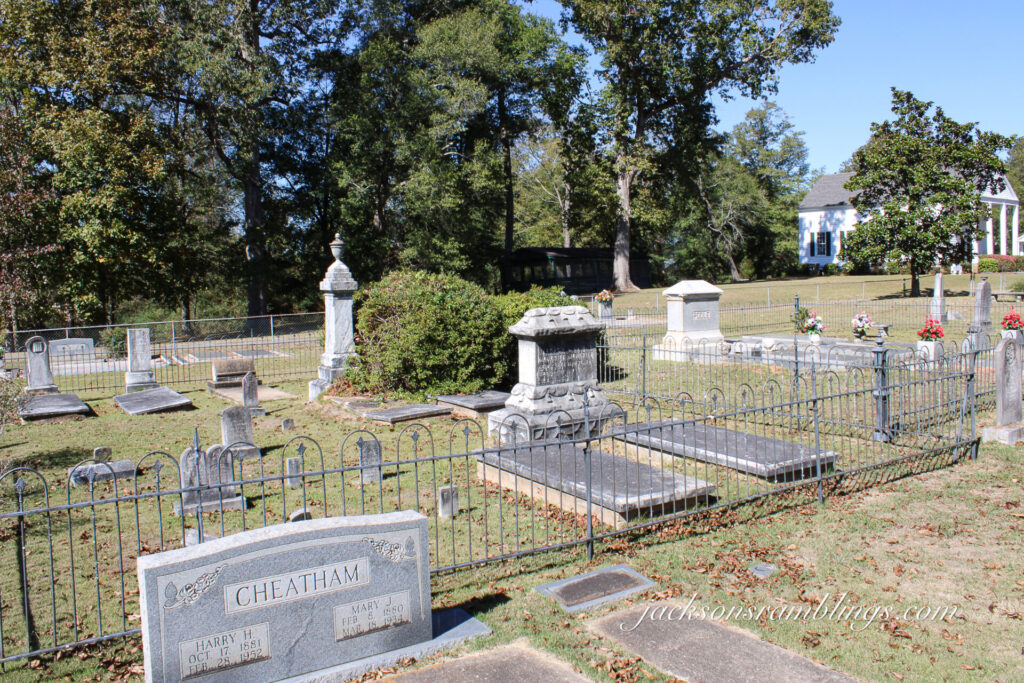
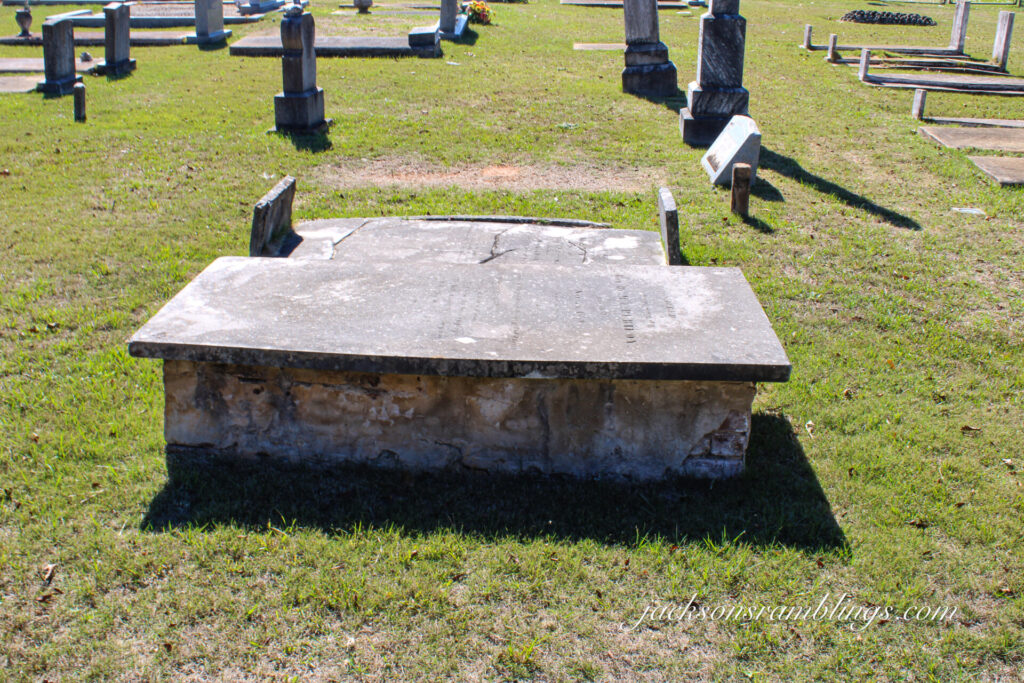

As we rode along, we came to a cemetery on the left (north side of Hwy 10). I slowed and turned in. I decided to look at the headstones for a minute and possibly take a few shots of the cemetery.
That is when I saw it. Sitting in the back, kind of in a corner was this beautiful old white church building. You guessed it. My phobia kicked in. The one that must take a photo of an old church. I just had to check that out.
I walked through the cemetery and captured a few shots of the various graves. One particularly interesting one was one I saw that was covered in seashells. I saw at least one that was above the ground. There were others with beautiful headstones.
I finally got to the back of the cemetery and maneuvered around and captured a few frames of that beautiful old church.
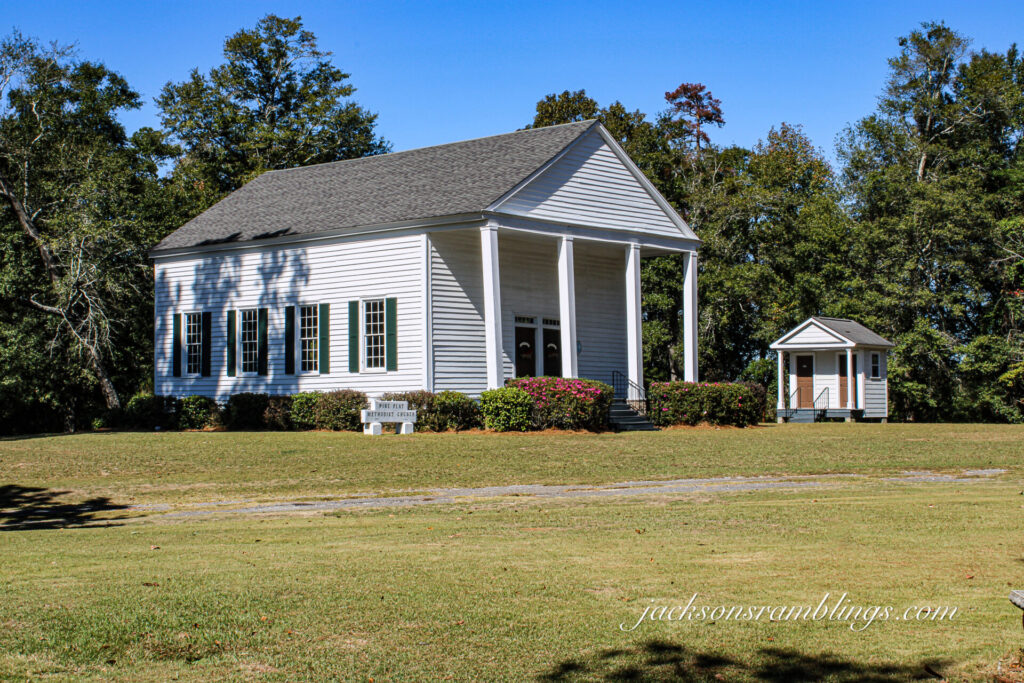
I would be afraid to guess how many times I have traveled across AL 10 in my lifetime. It is not that often, but it has been a considerable number. I am sure I have seen it before but for some reason I did not remember paying any attention to this church.
I saw the sign outside that said the name was Pine Flat Methodist and it was established in 1858.
I went on back to the Jeep and we went on our way. I pondered on this one for a while and then my mind went to other things and places as we headed on home.
When we finally got home, and I had opportunity I started to research Pine Flat Church. I found that it is indeed a Historical Black Belt Church.
The first source I found on it was the Greenville Advocate online newspaper (1). The article in the September 27, 2023, titled Pine Flat Church Celebrates 165 years jumped out at me. From that article I found that on October 1, 2023 Pine Flat held the yearly home coming event and this year was the 165thyear. This memorial event is held the first Sunday in October and has been since 1968.
The second source I found on this old church was from a site called (2) Wikimapia. It said, “In the spring of 1858, the present Pine Flat Methodist Church building was erected by the men of the community with the help of their slaves. Virgin pine trees were felled, and the timber sawed with a jigsaw at Bowen’s Mill. The boards were then hand planed.”
“The church lot was deeded by James and Martha Reynolds who lived near the site where the first house was built in Butler County; this home was erected by James K. Benson, government surveyor in 1815”.
This article goes on to say, “The church had a slave gallery extending across the front end. This gallery could be entered by stairs leading from the front porch. At morning services, the slaves sat in the gallery and in the afternoon special services were held for the slaves who sat downstairs while the white people attending sat in the gallery. When the church was repaired in 1870 the slave gallery was removed. The pews, communion rail, table, half octagon-shaped pulpit, and doors all are constructed of heart pine and are put together with square nails or wooden pegs. At first the center pews were divided with a solid partition to separate the men from the women. The one odd small bench, in the style of a colonial deacons’ bench, was one of three that were placed near the altar, and were used by those who came requesting the prayers of the congregation.”
This is truly in my opinion a historical Black Belt Church that appears to be in great condition and will hopefully be standing just as well kept for centuries to come. I salute those that are taking care of it and hope the generations that follow will do the same.
Sources:
(1) https://www.greenvilleadvocate.com/2023/09/27/pine-flat-church-celebrates-165-years/
(2) http://wikimapia.org/37239368/Pine-Flat-Methodist-Church